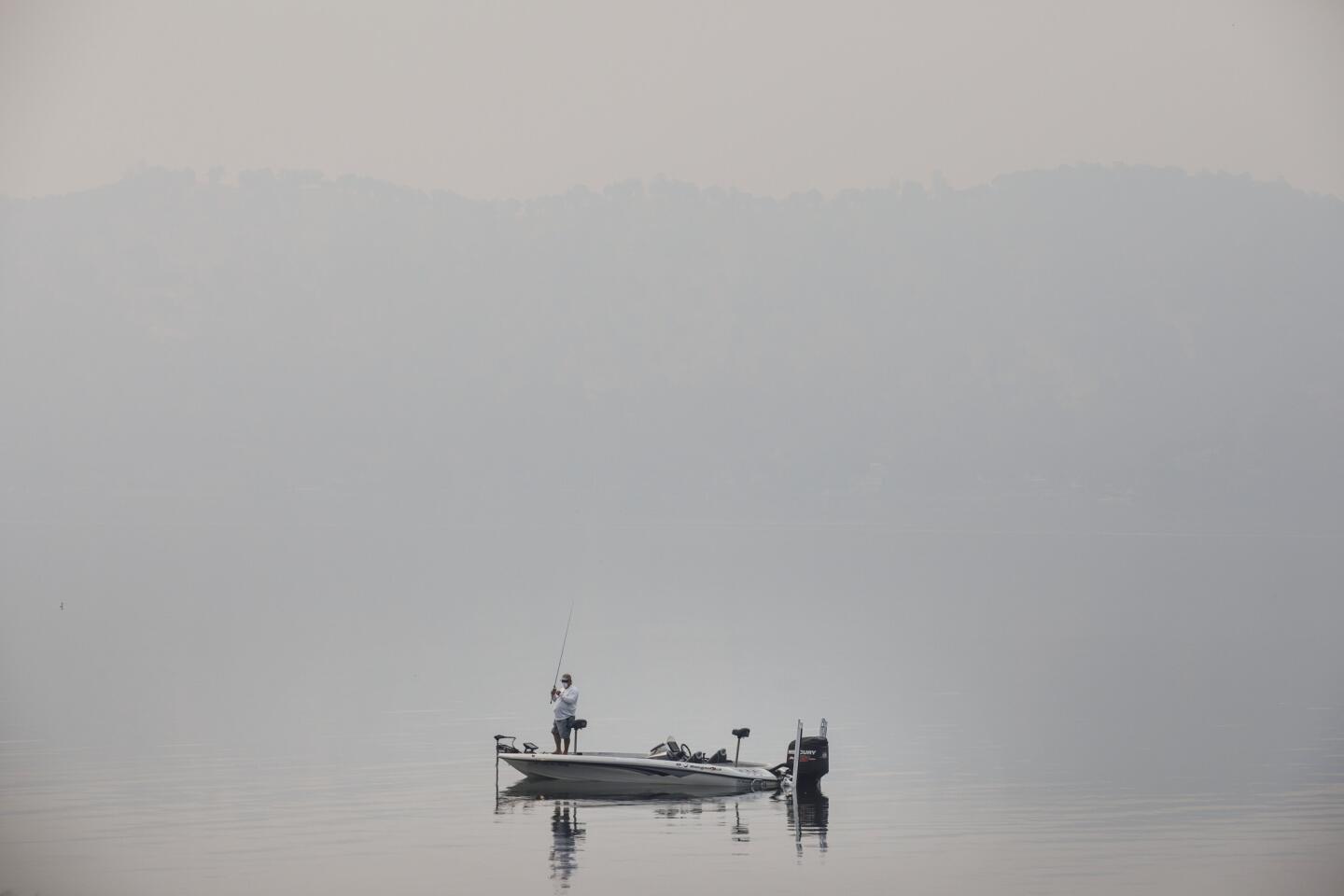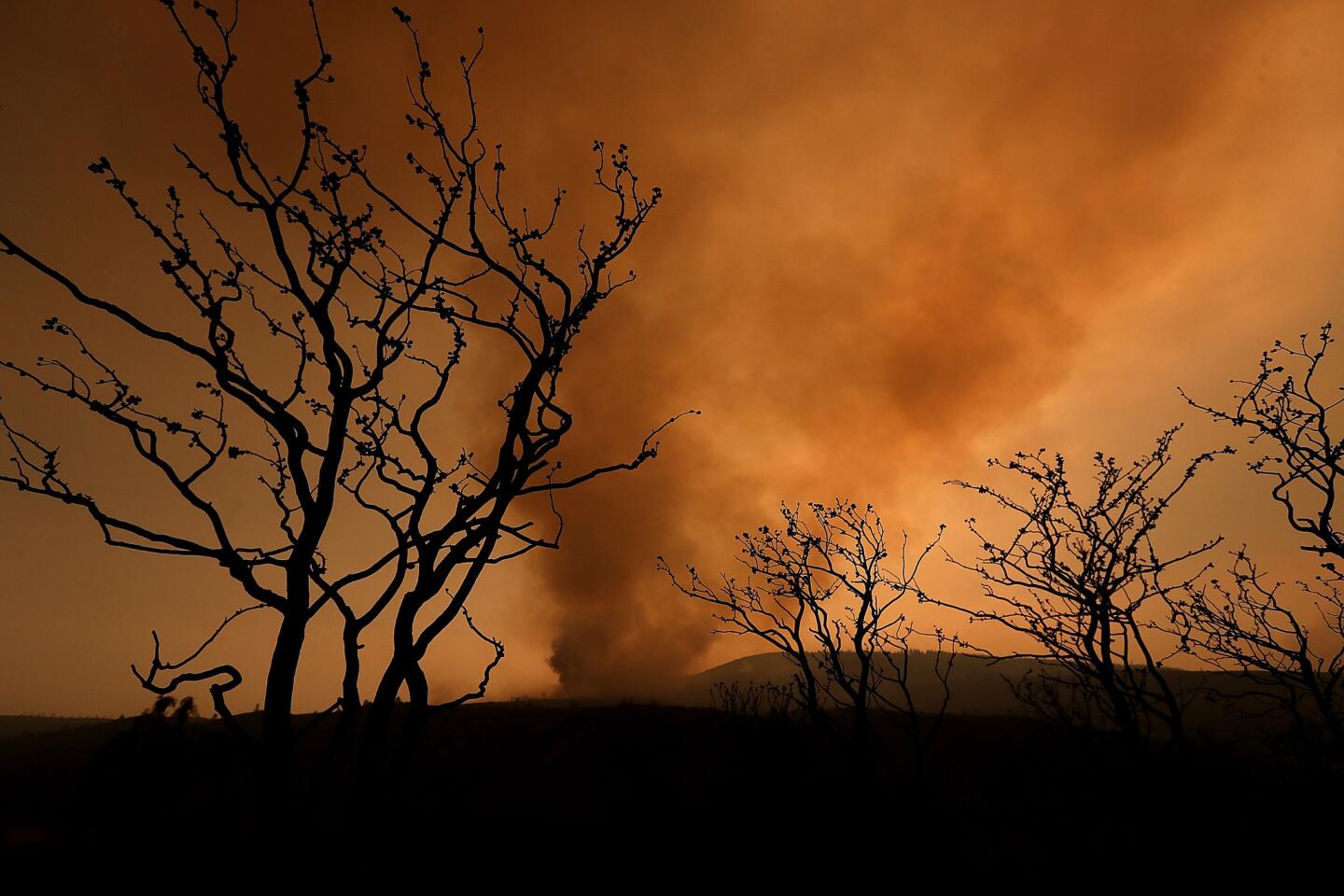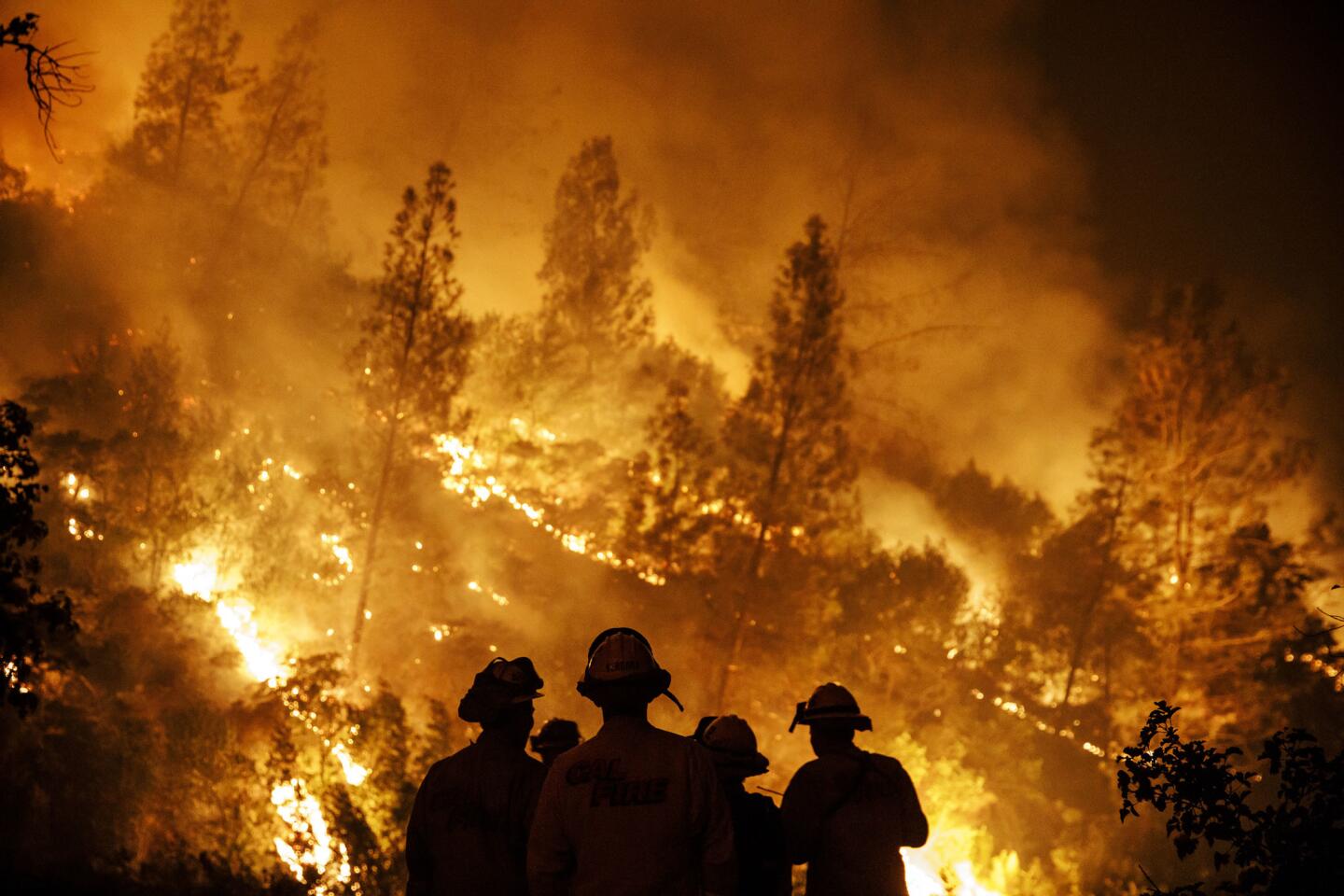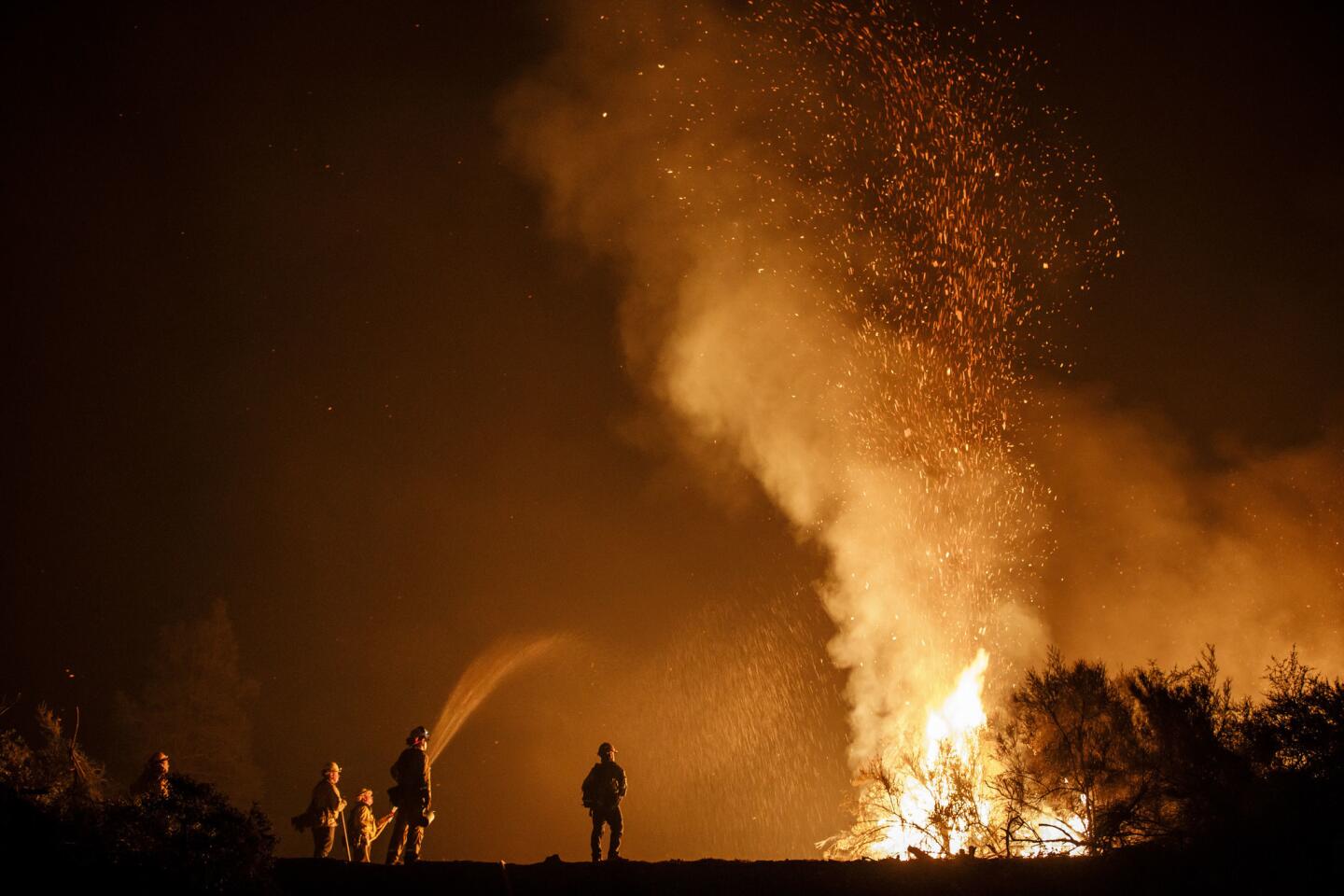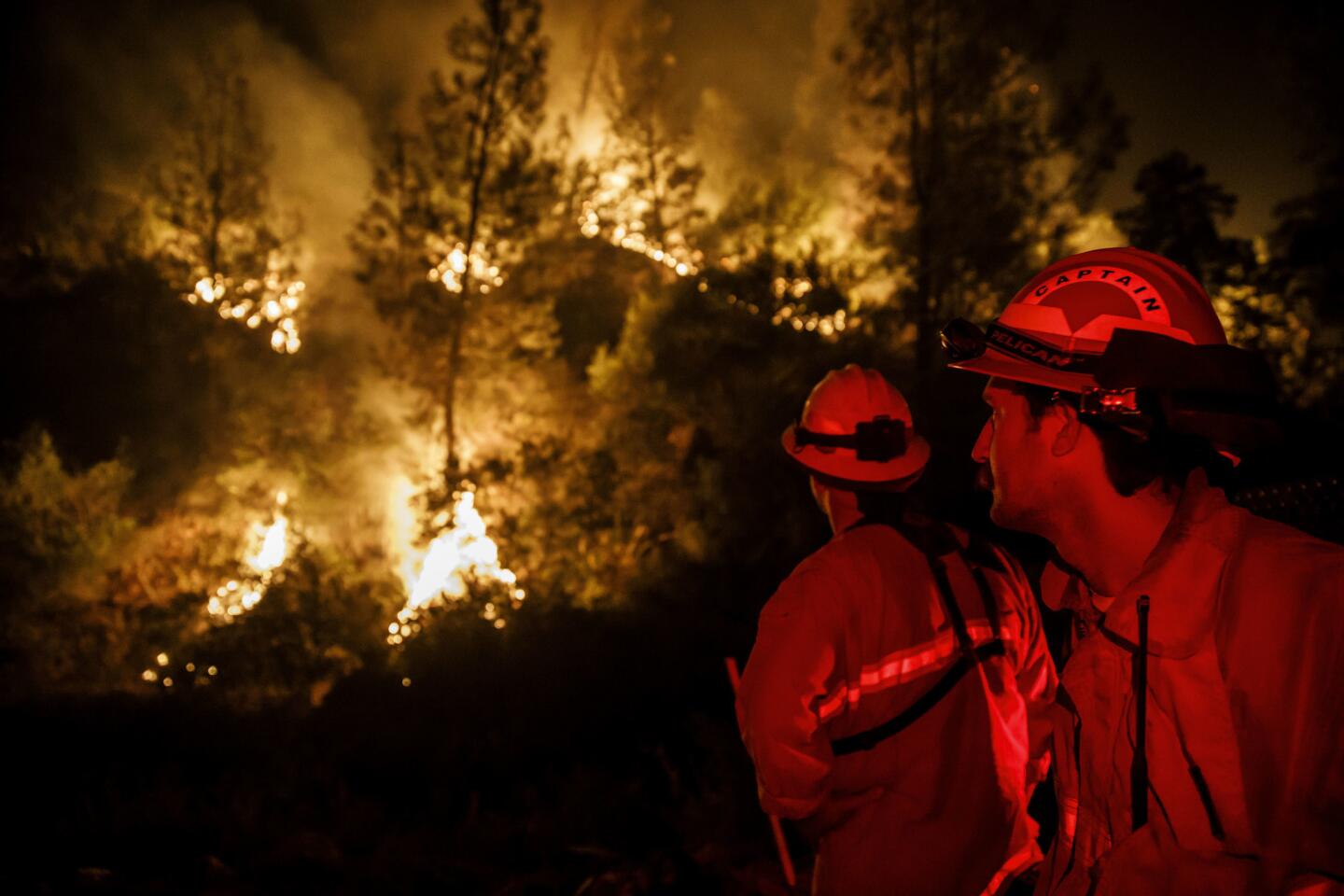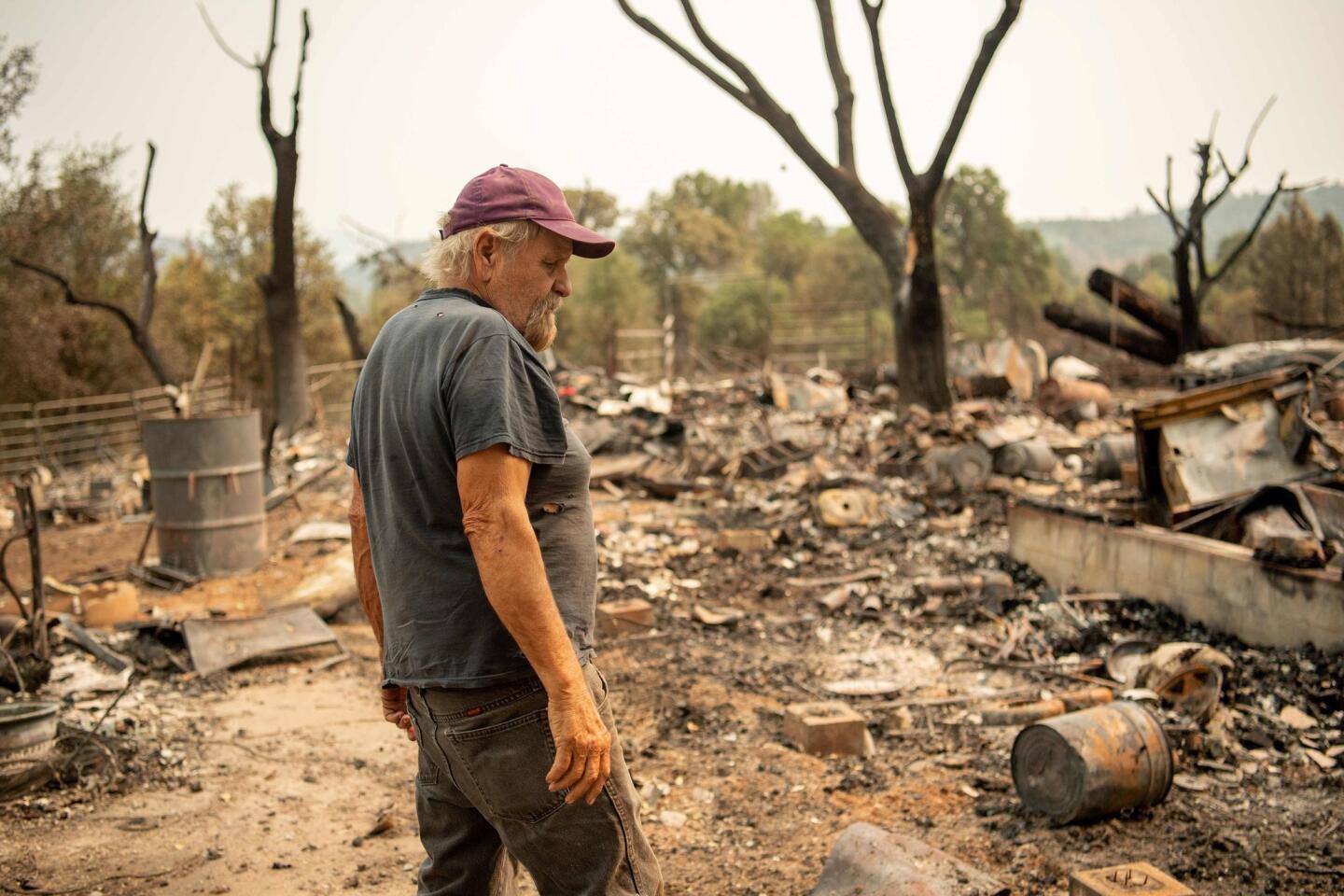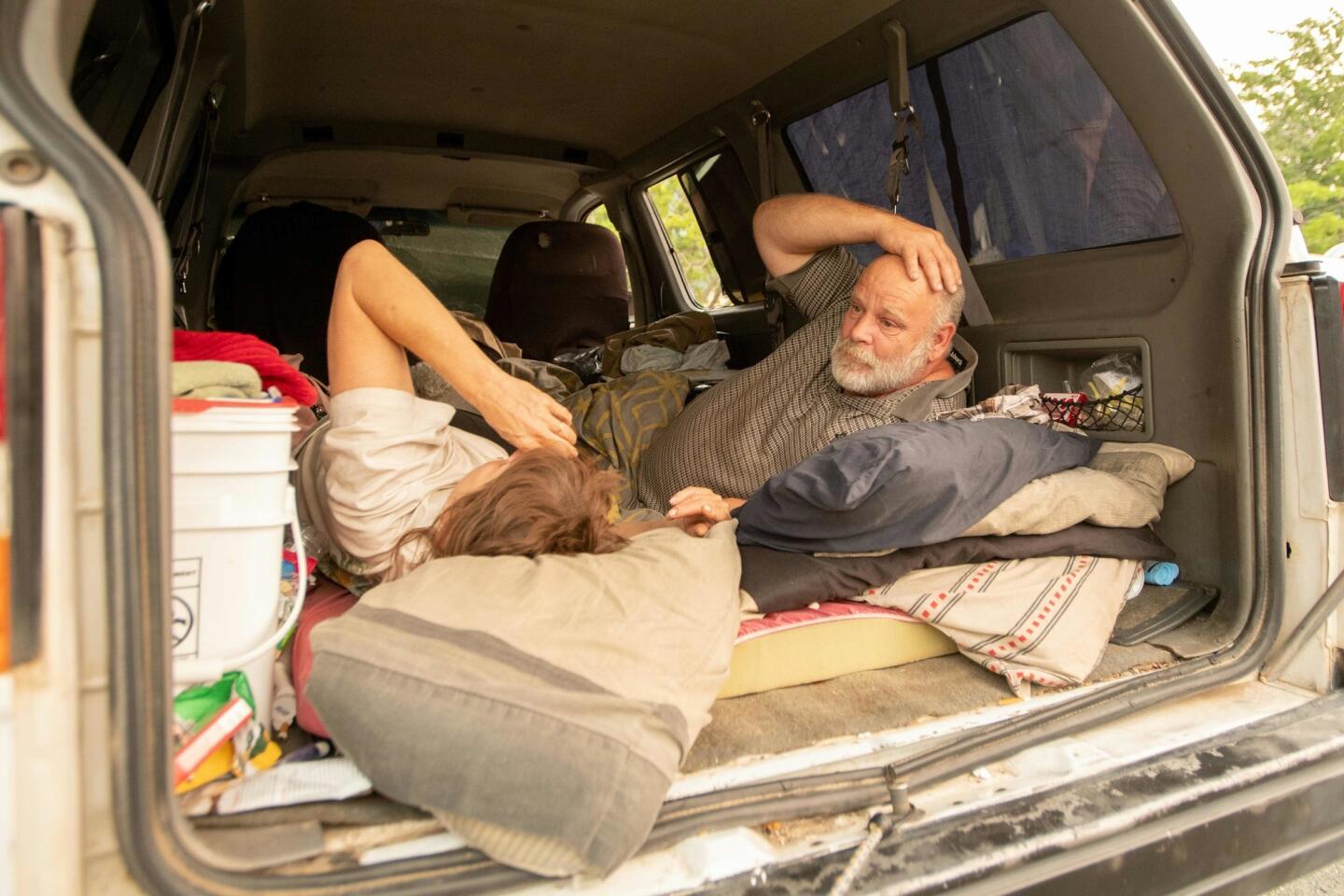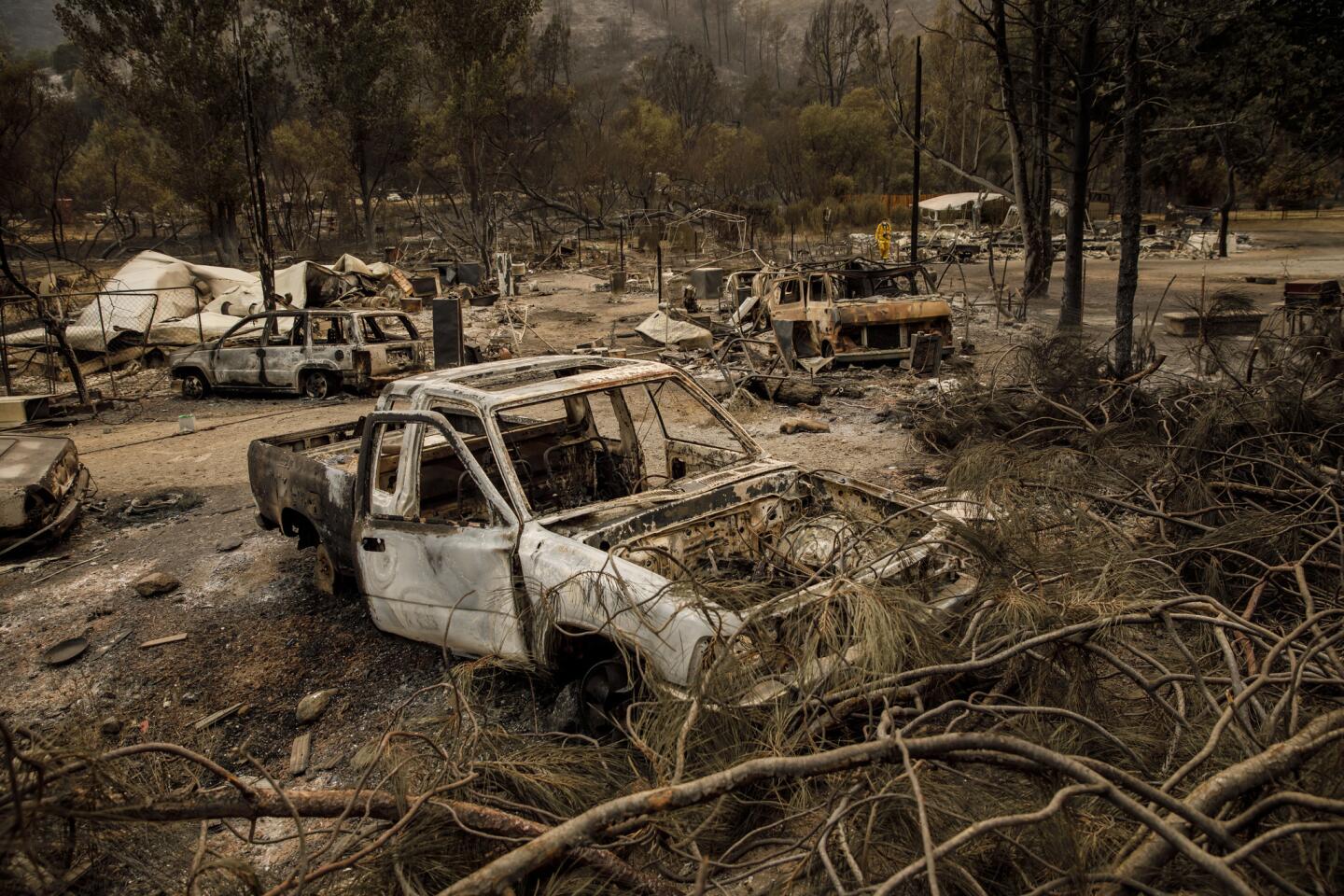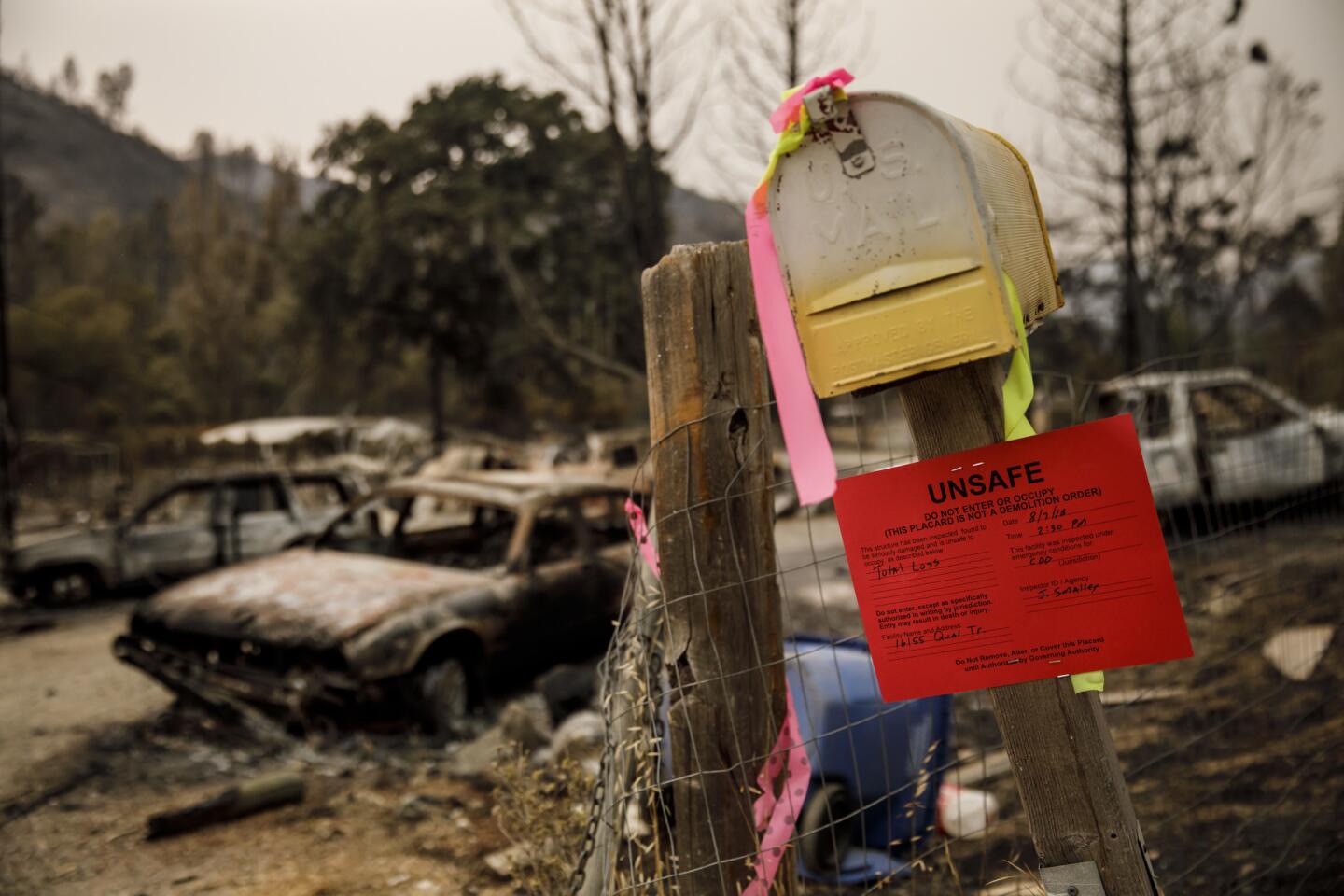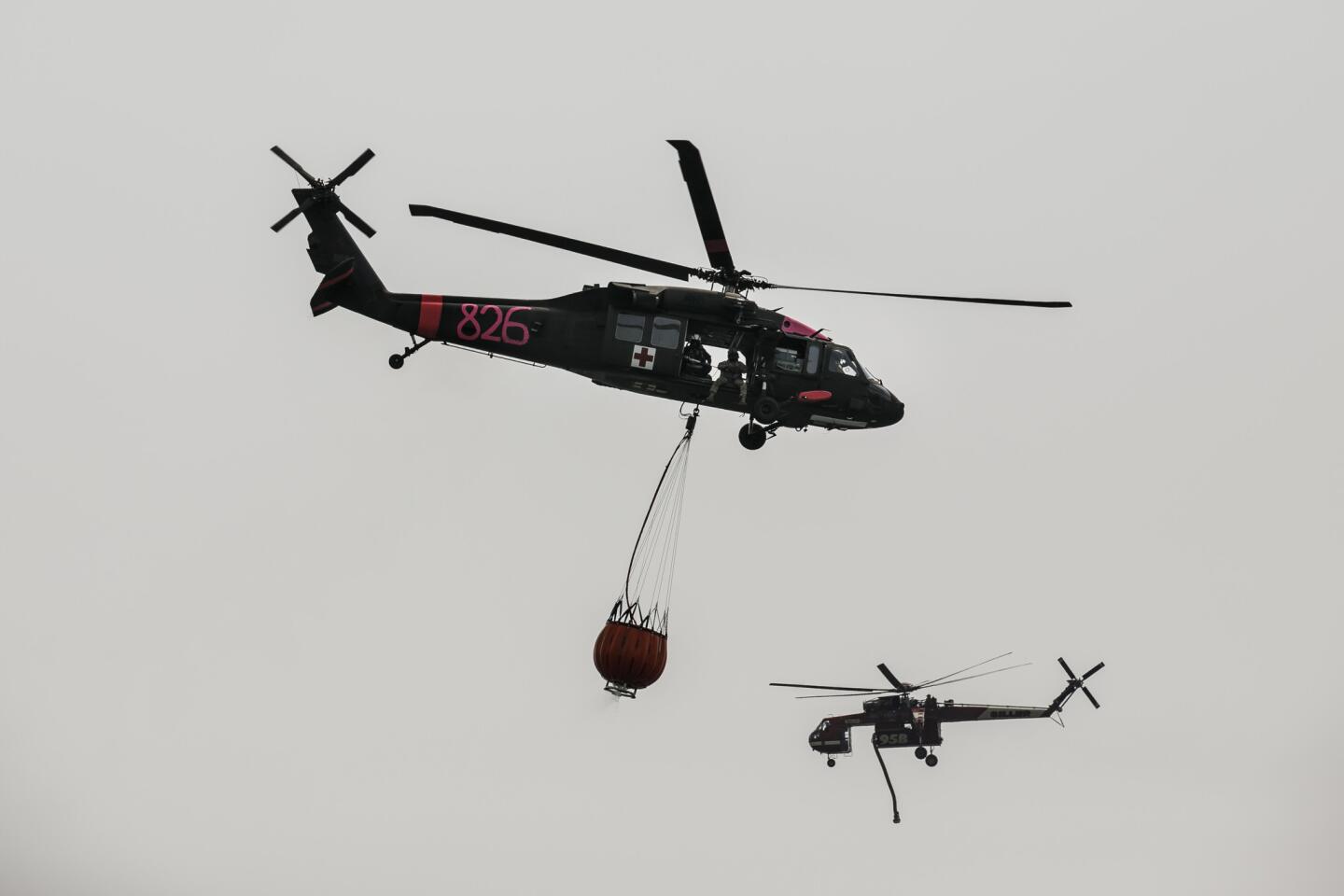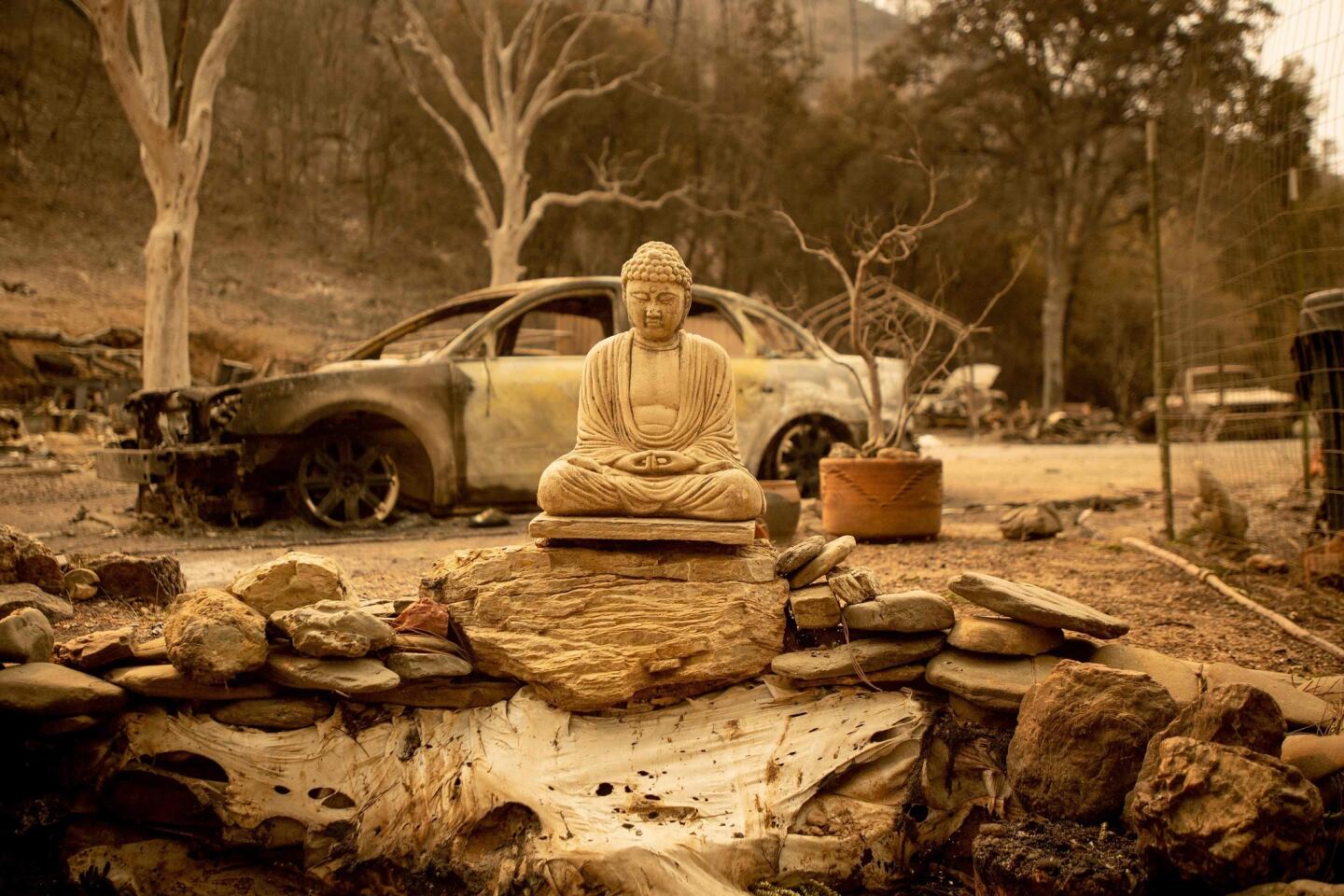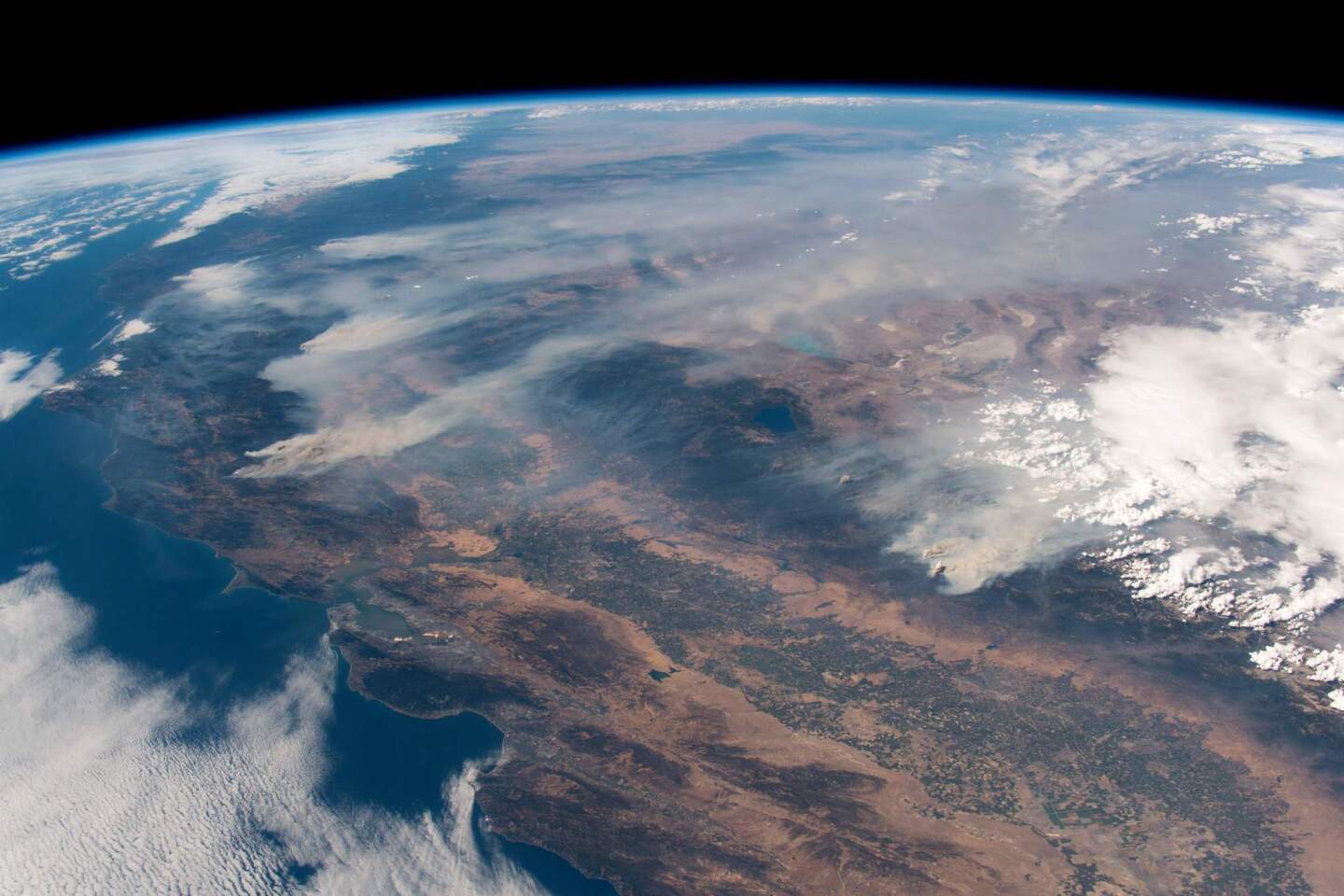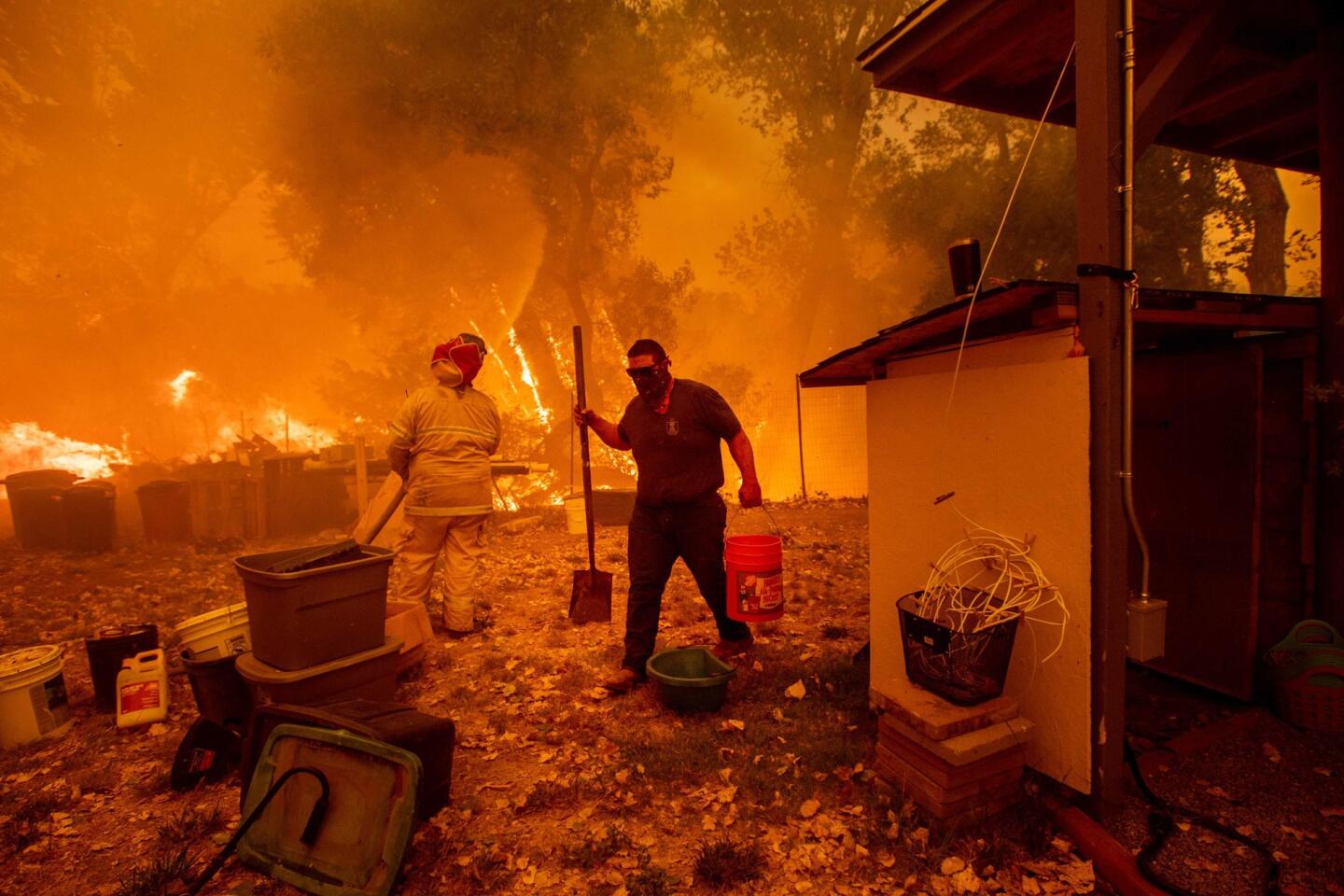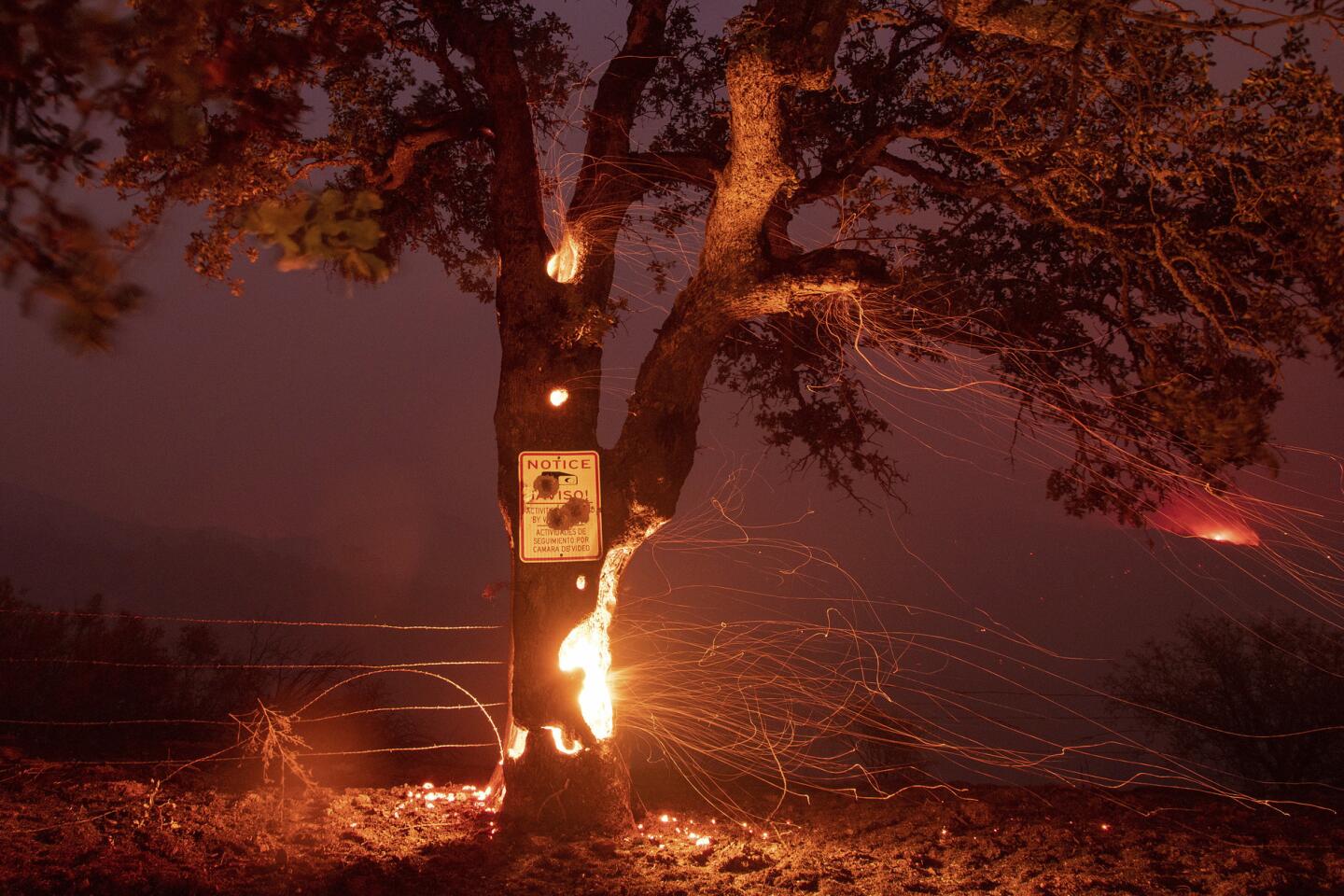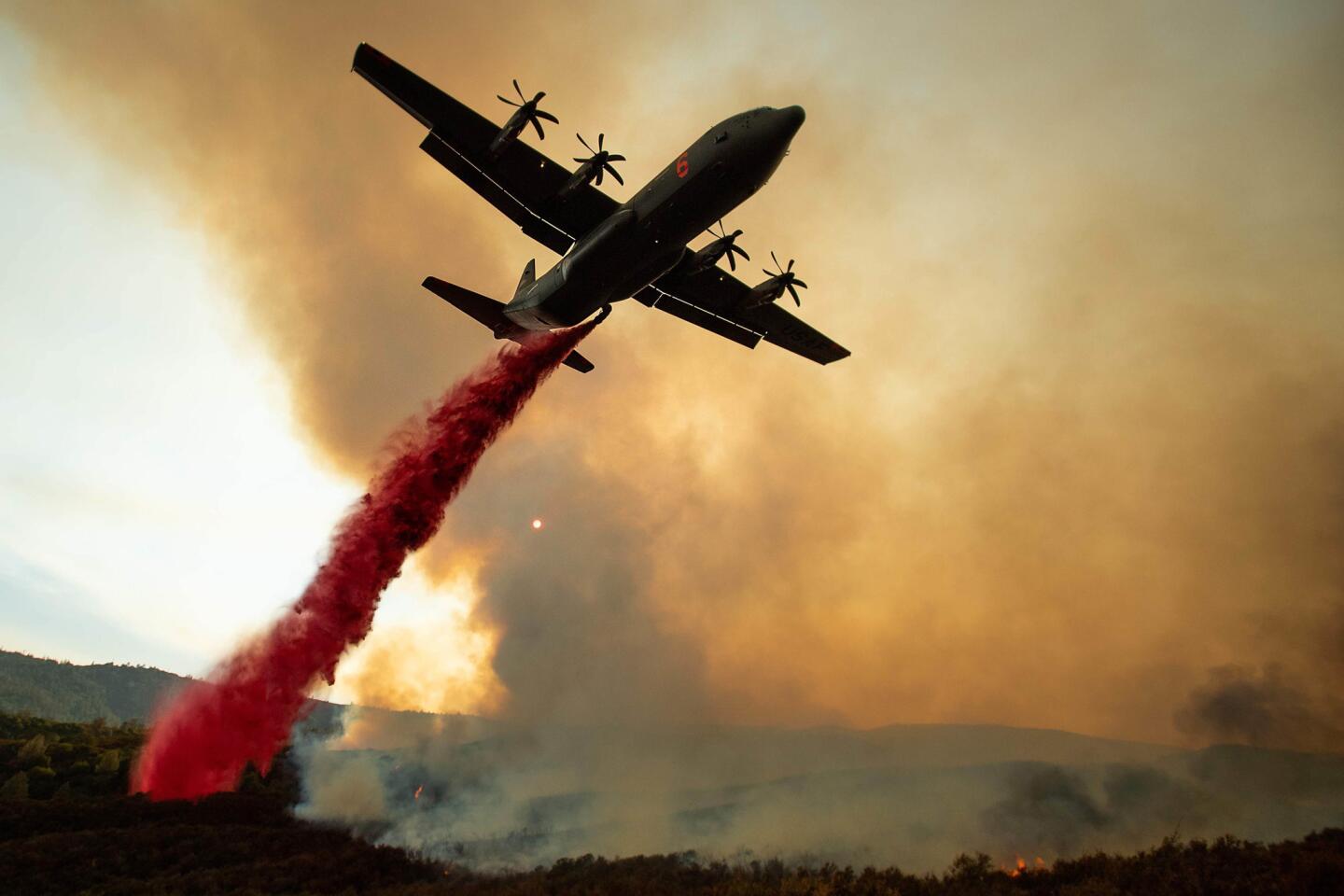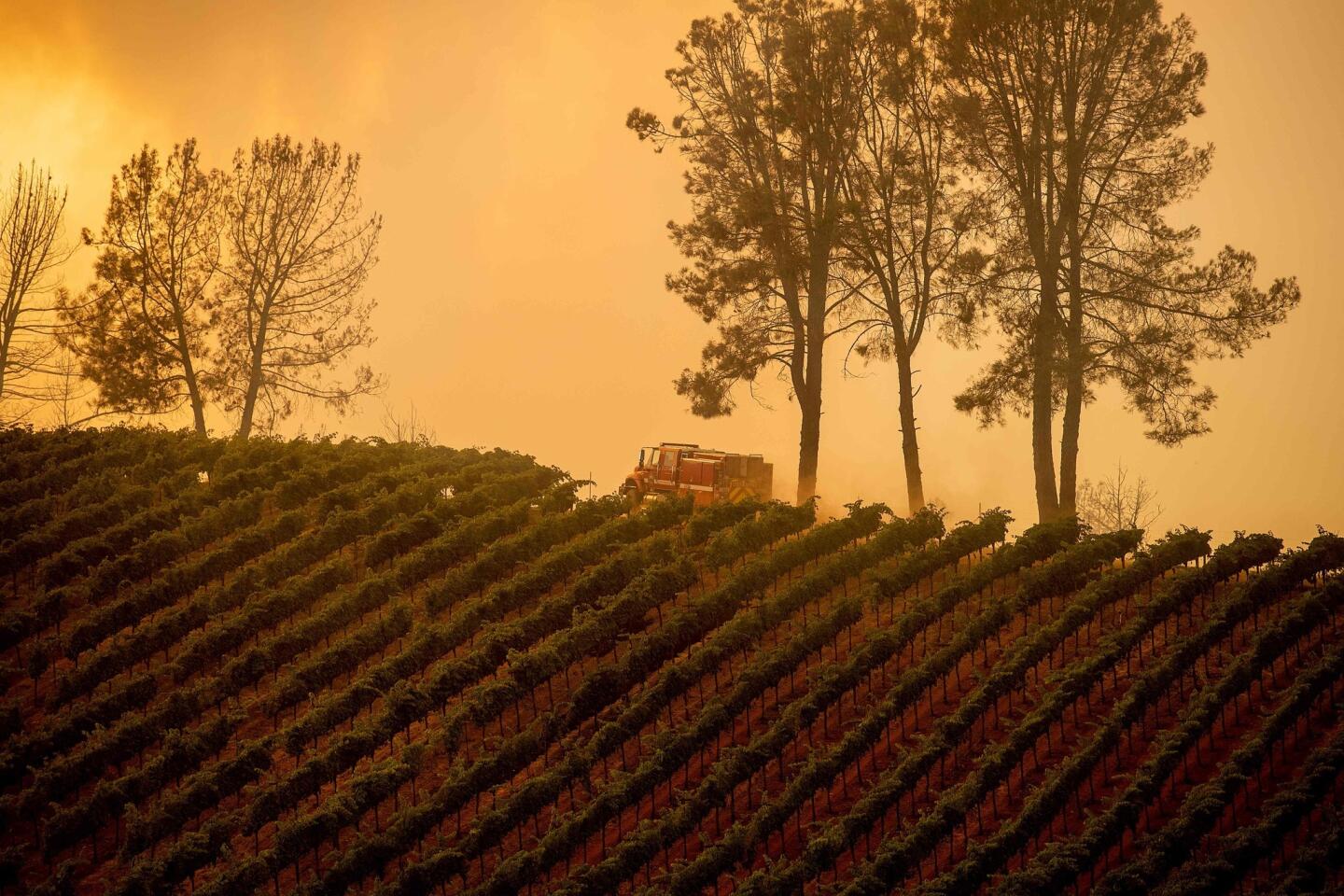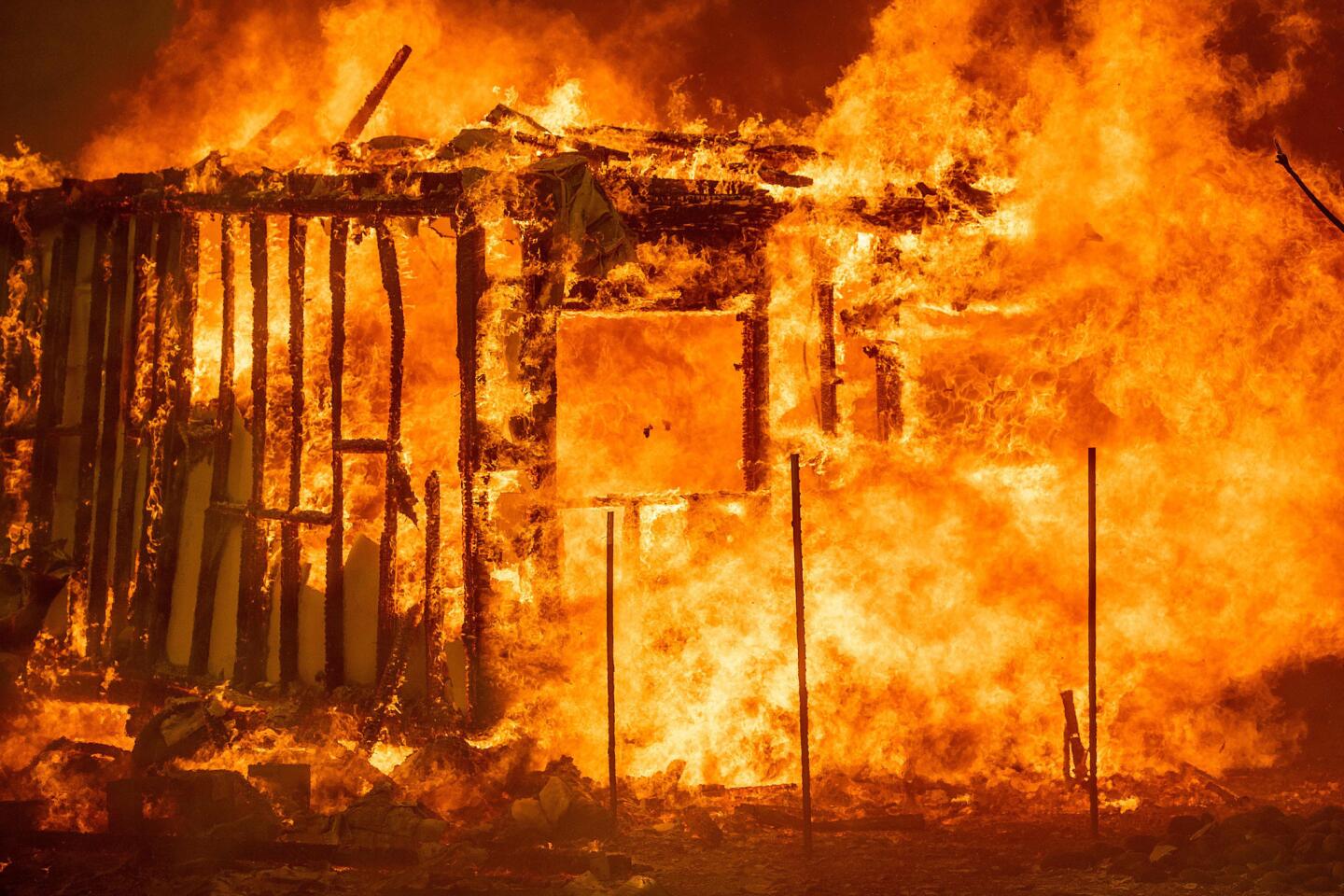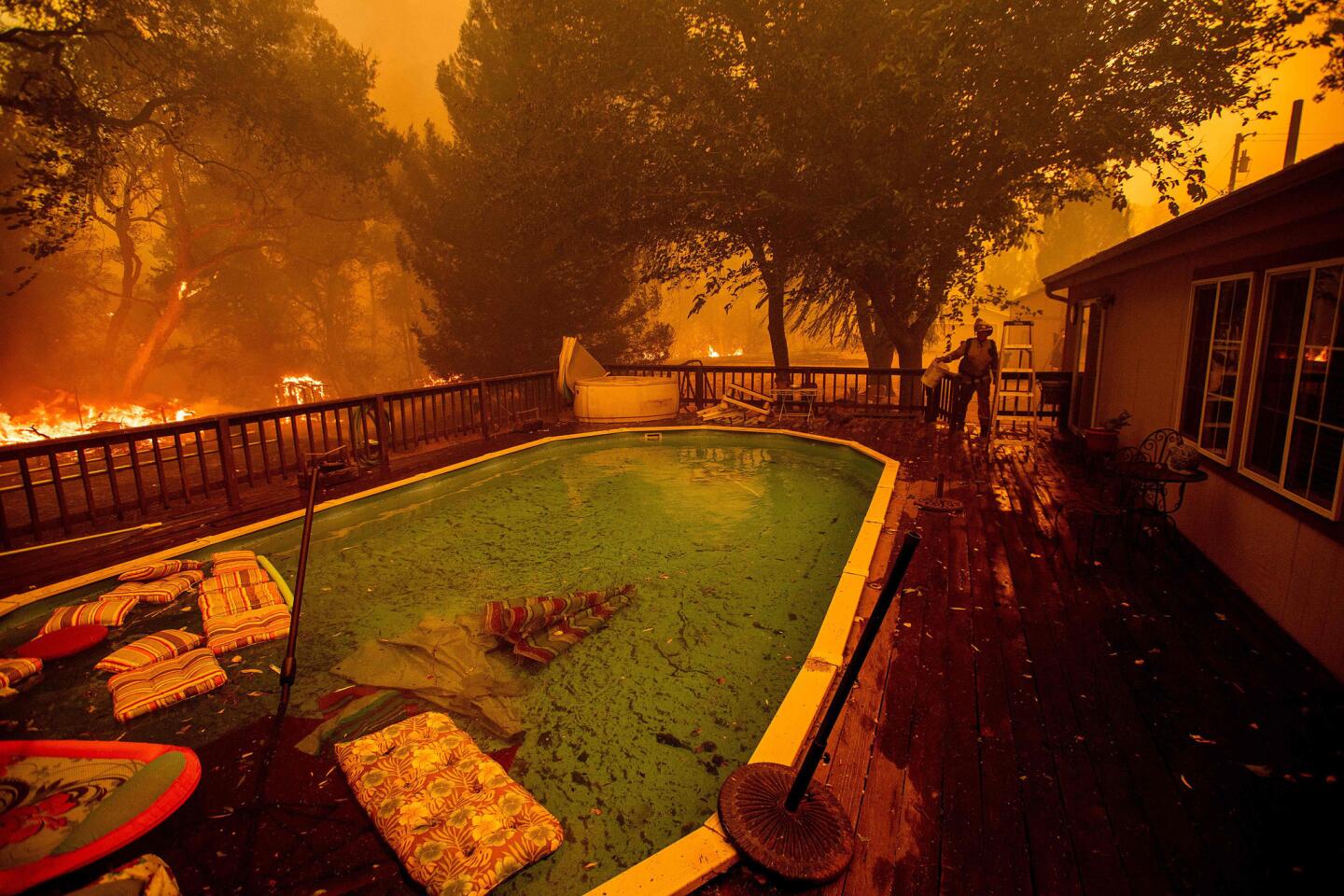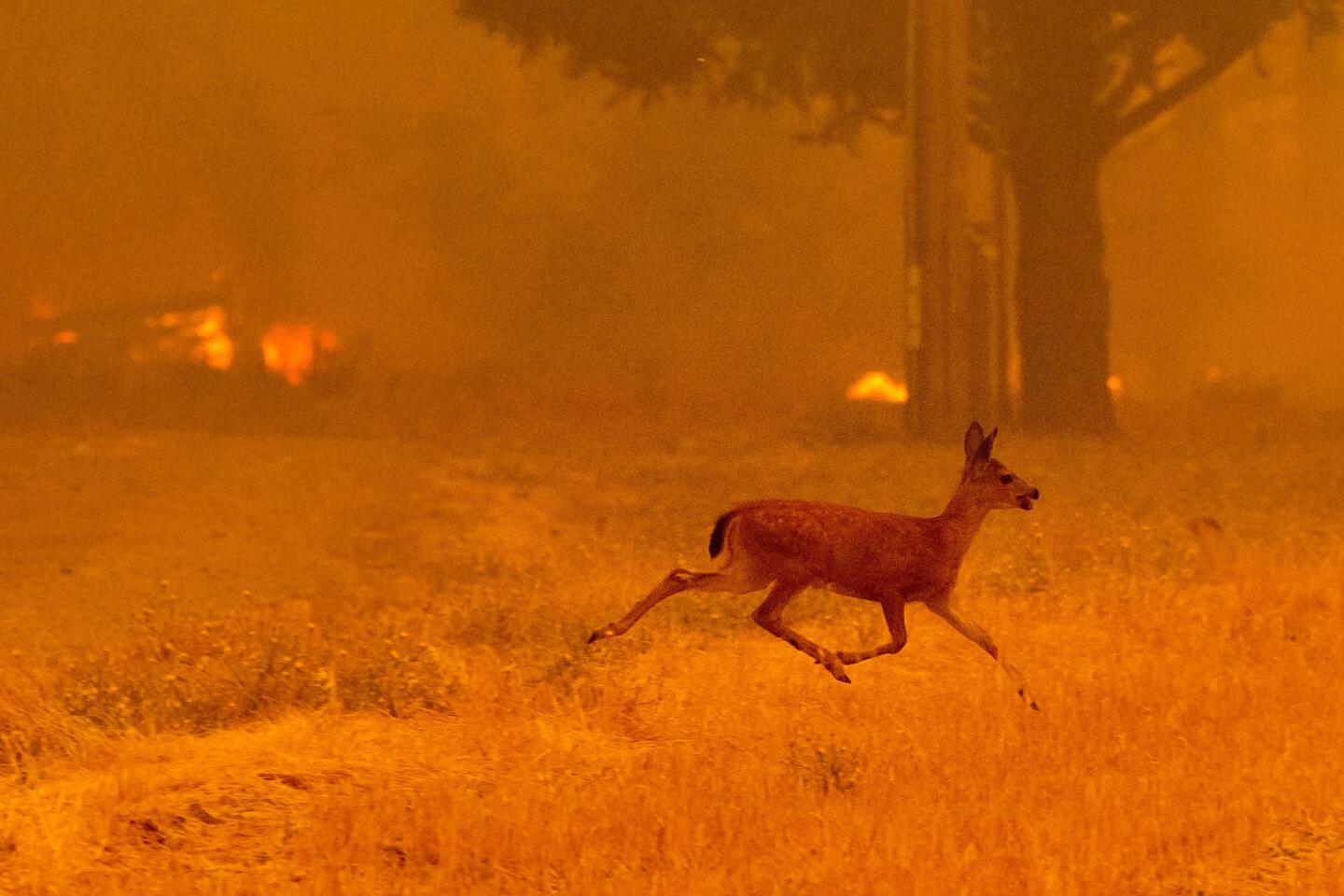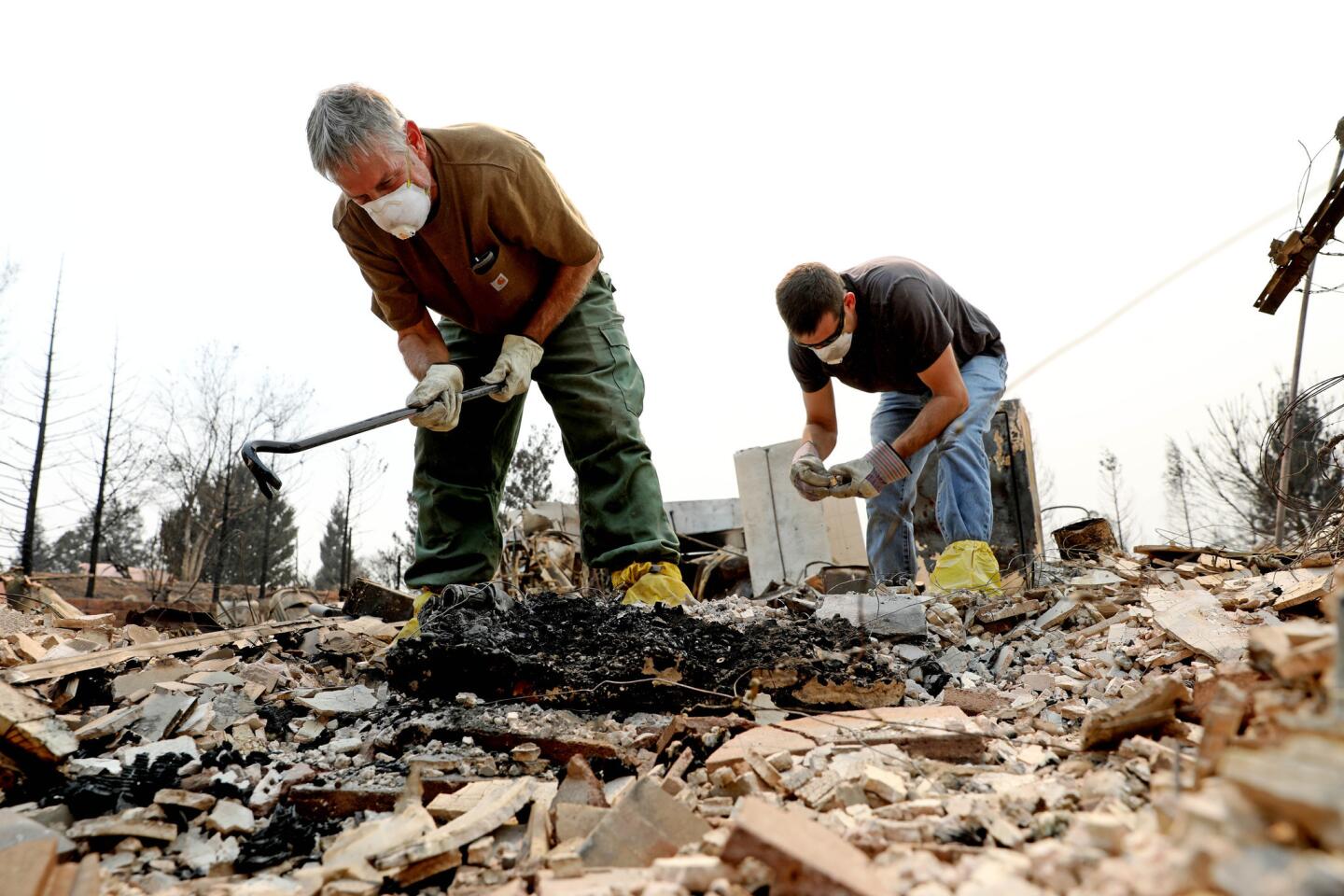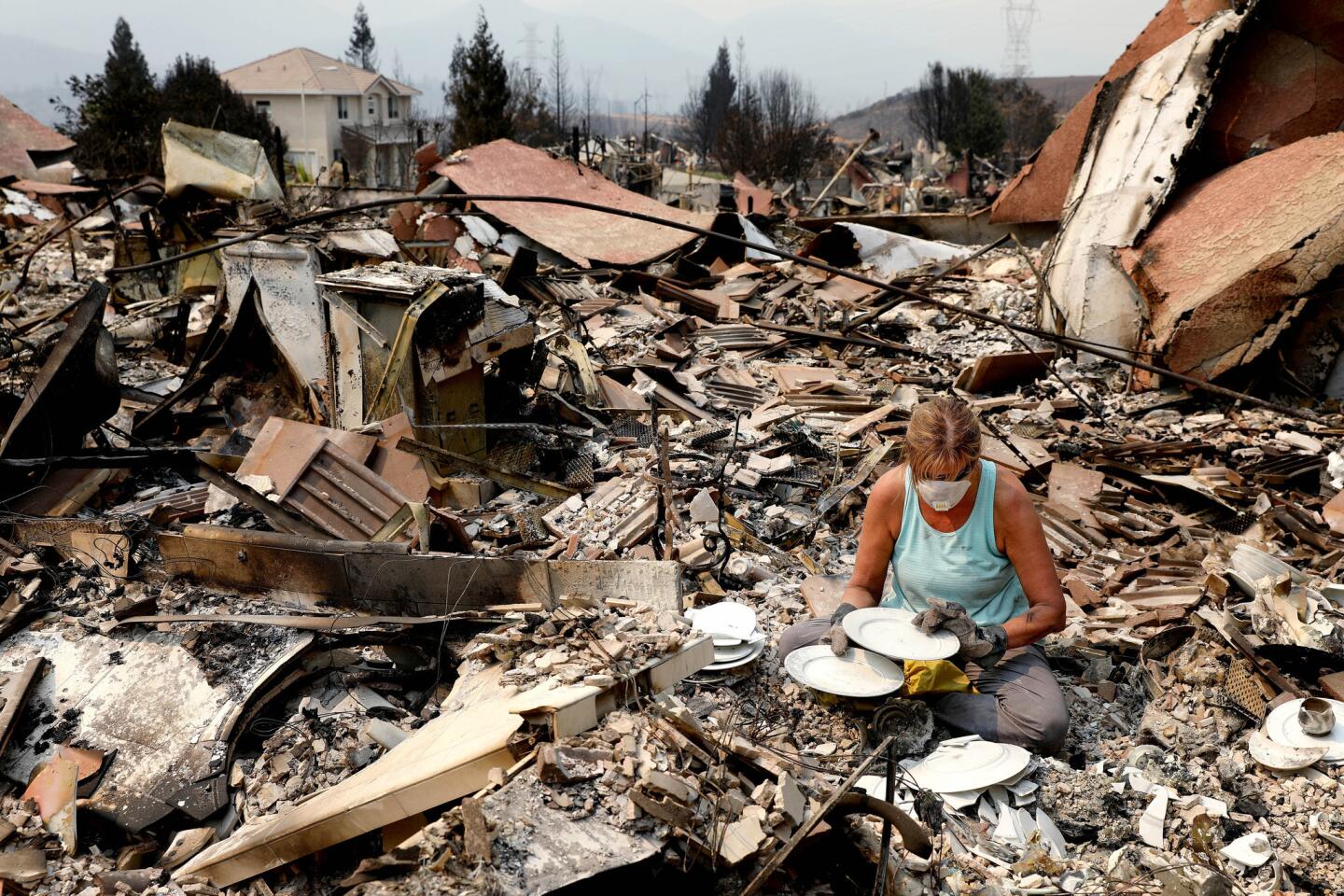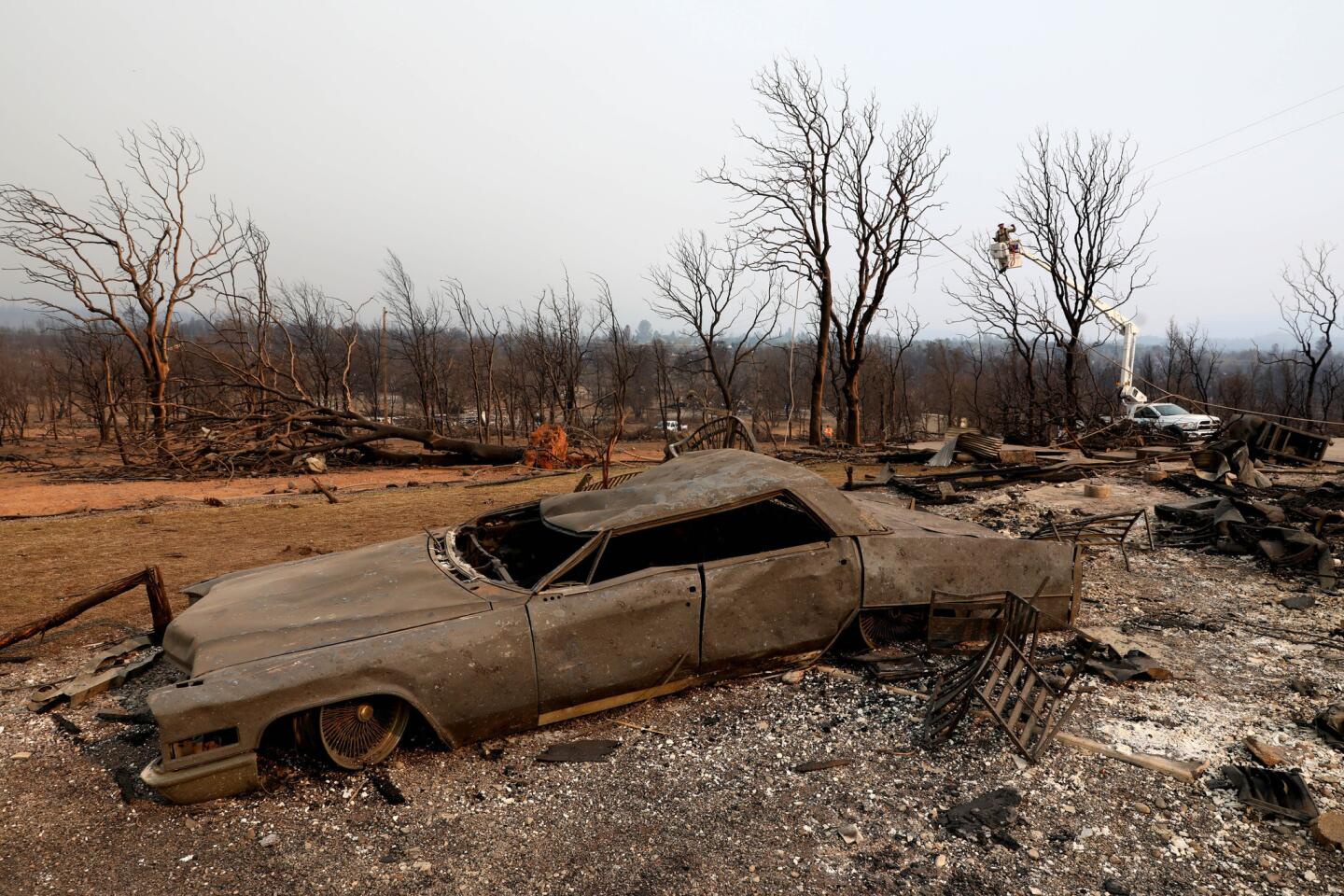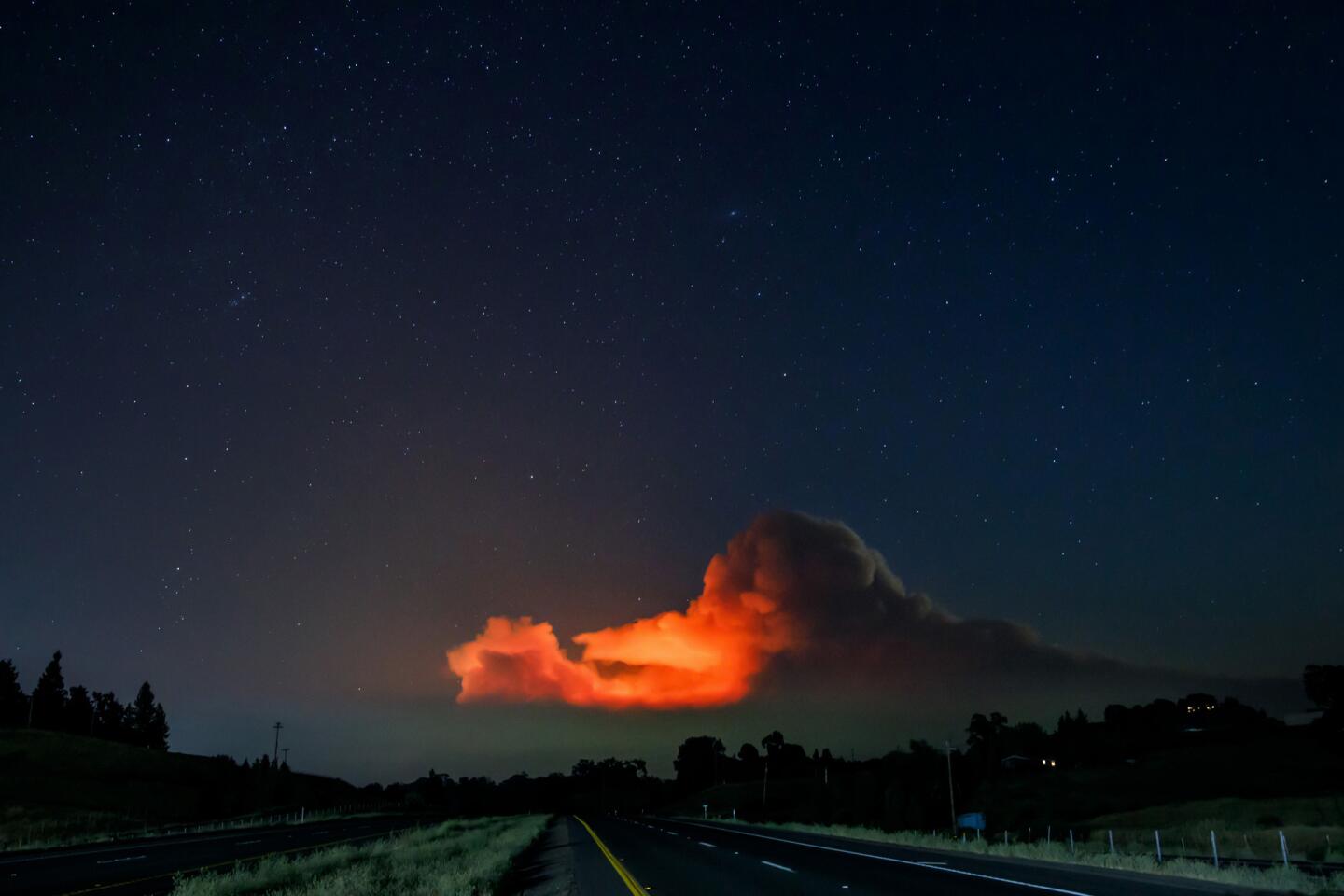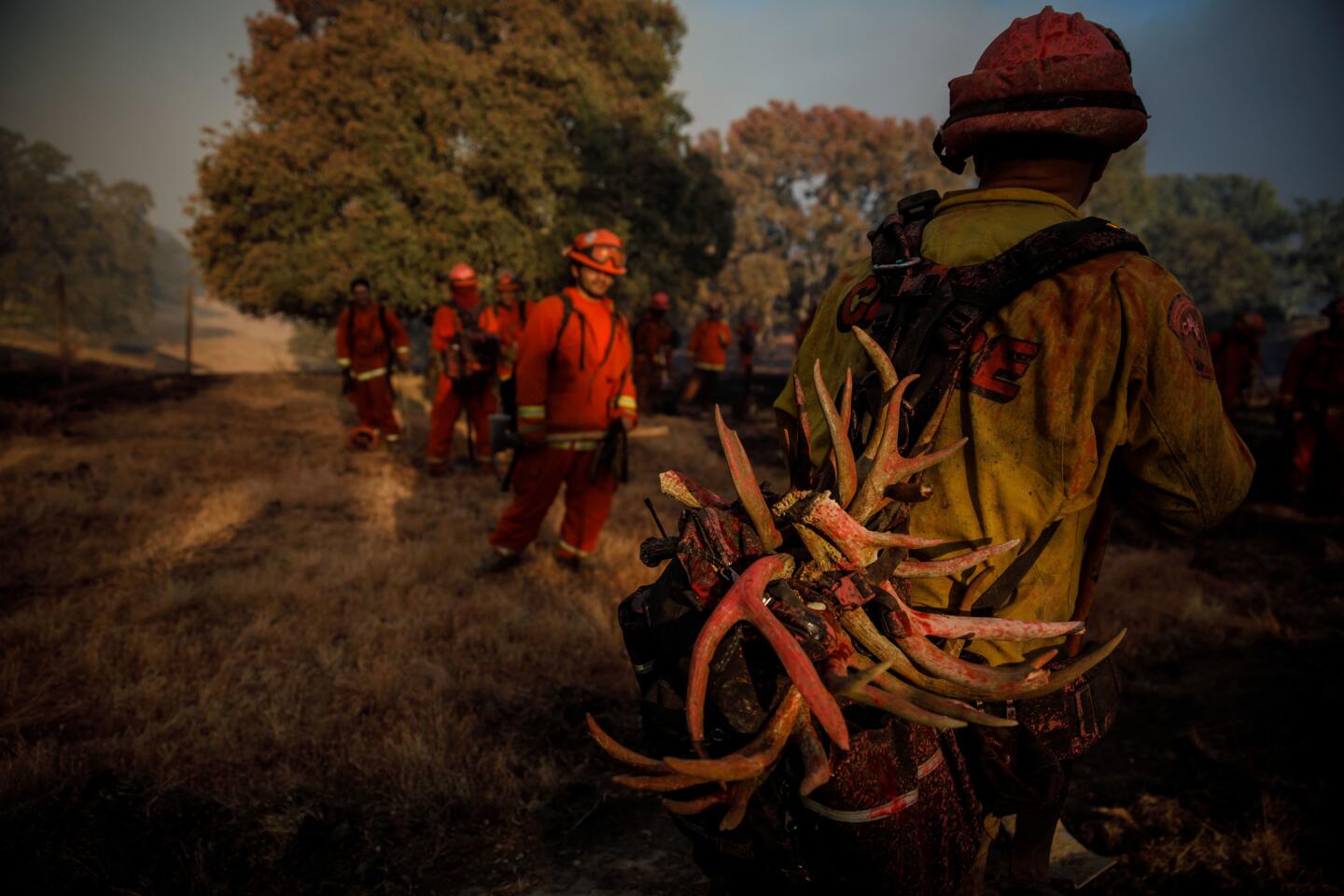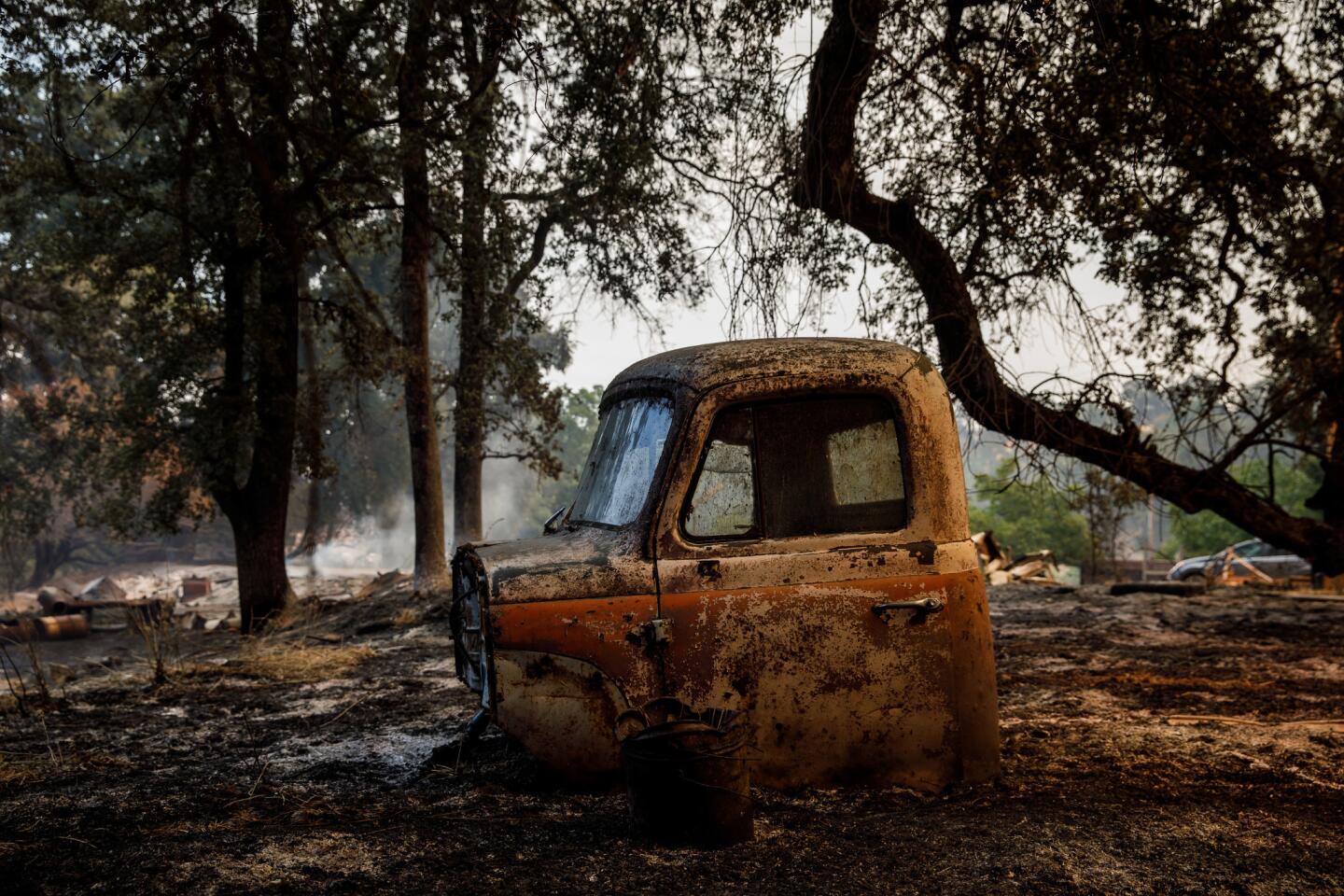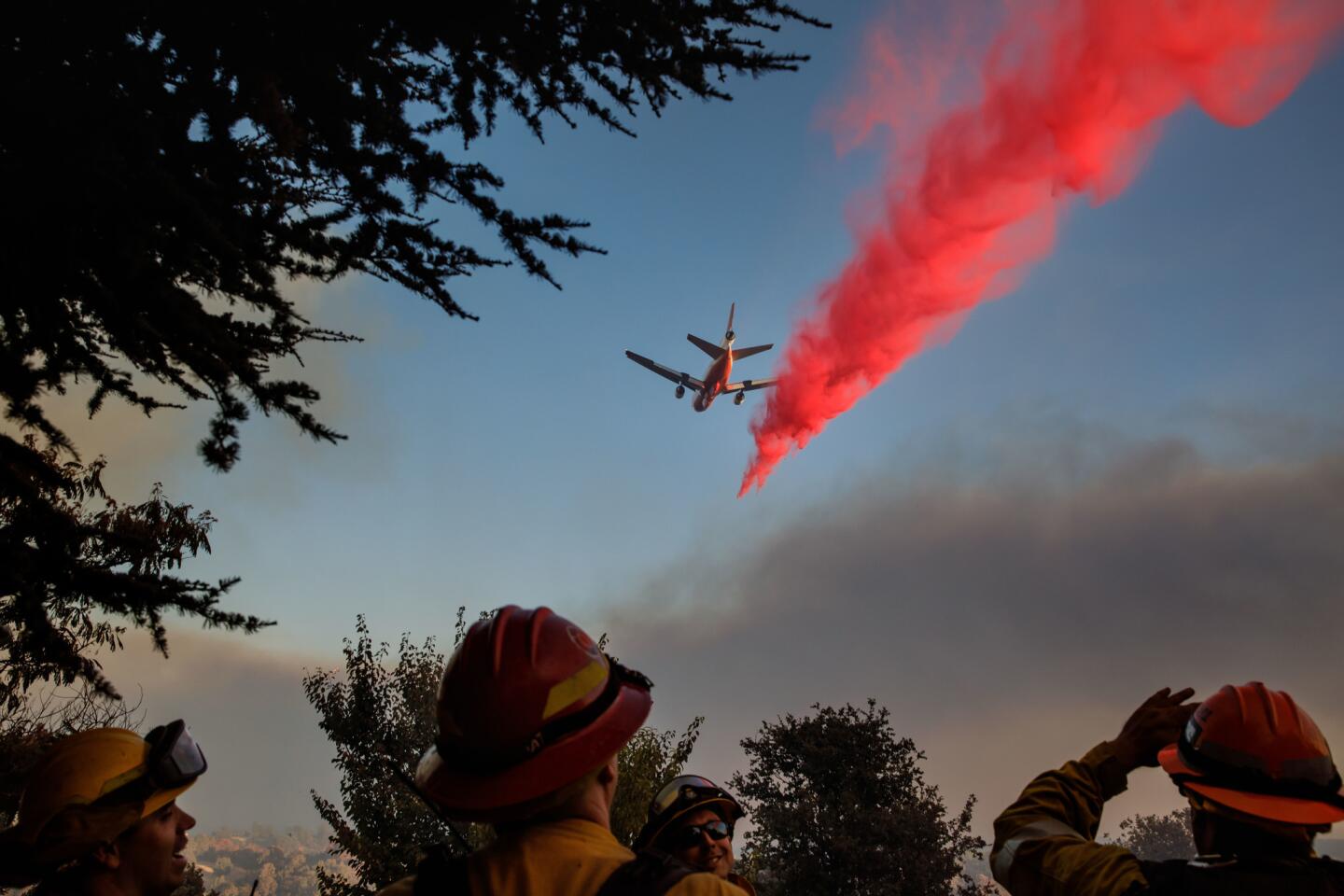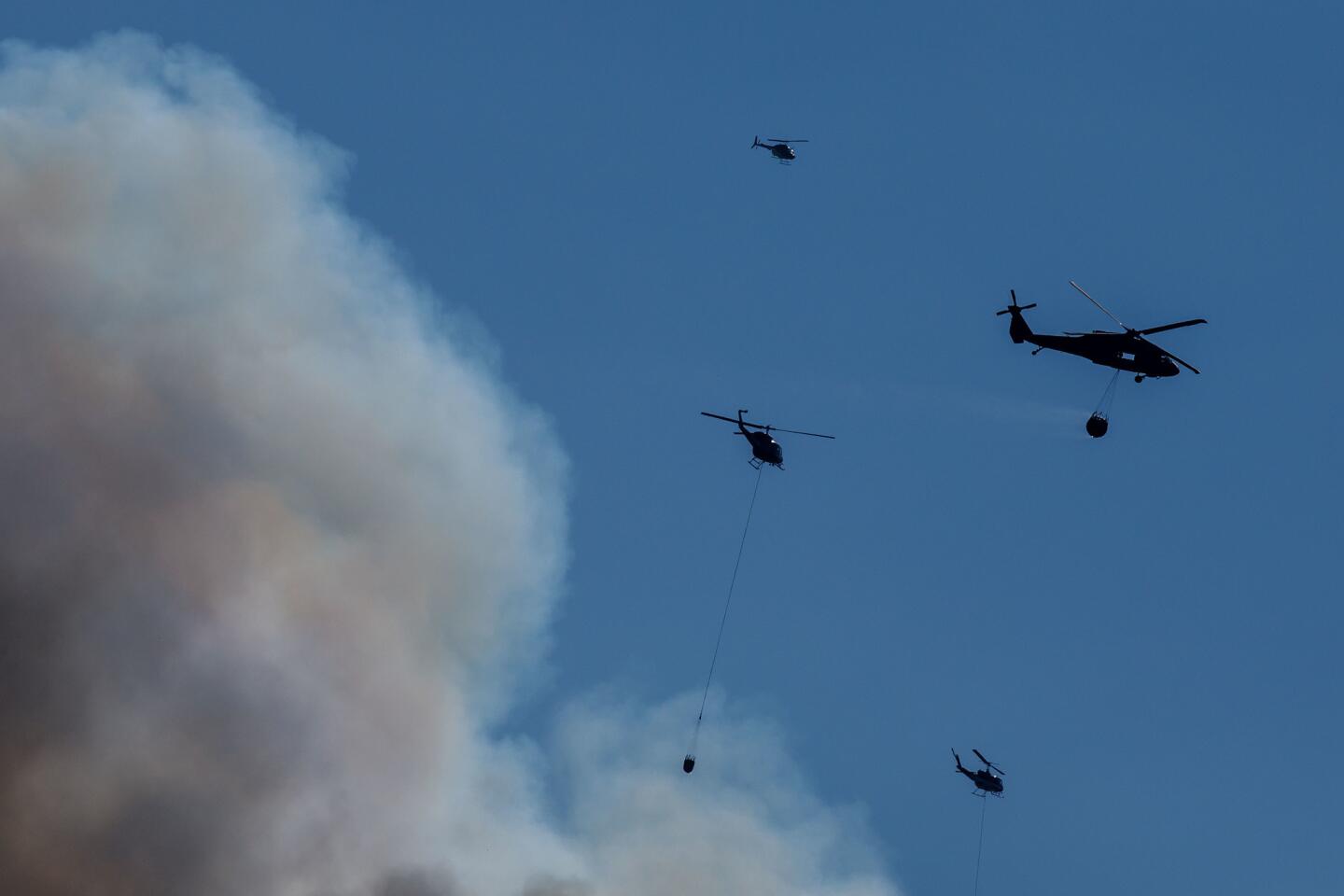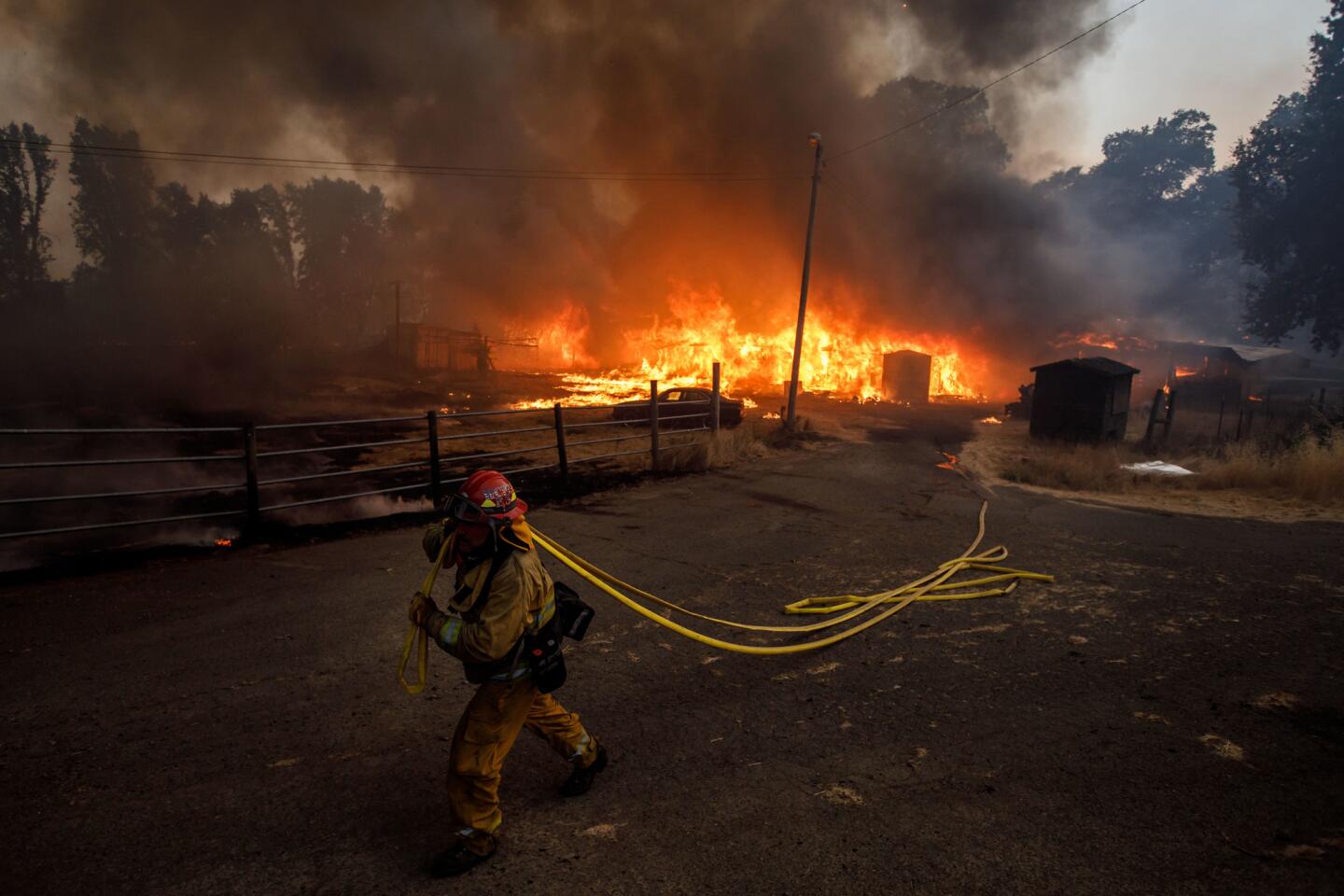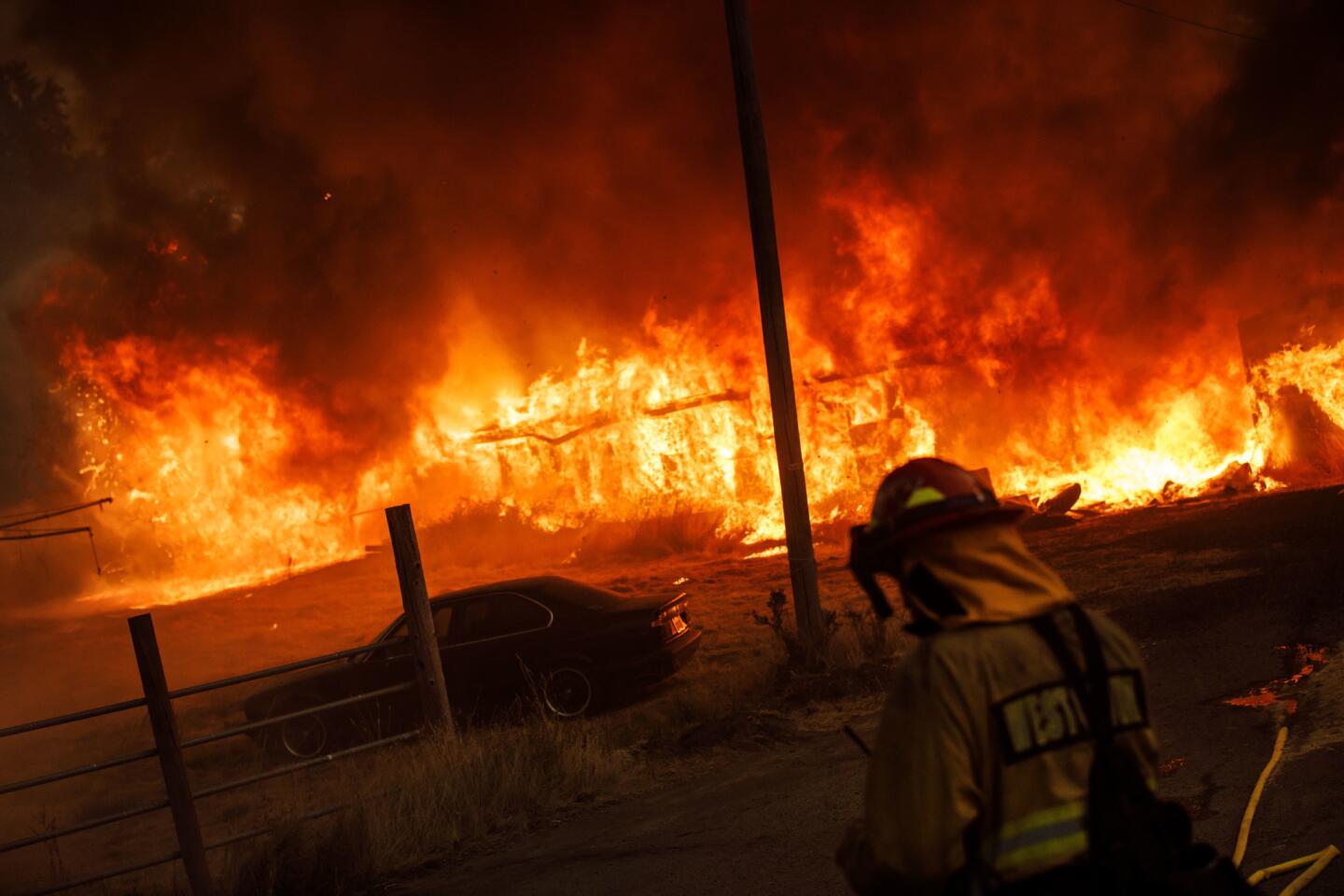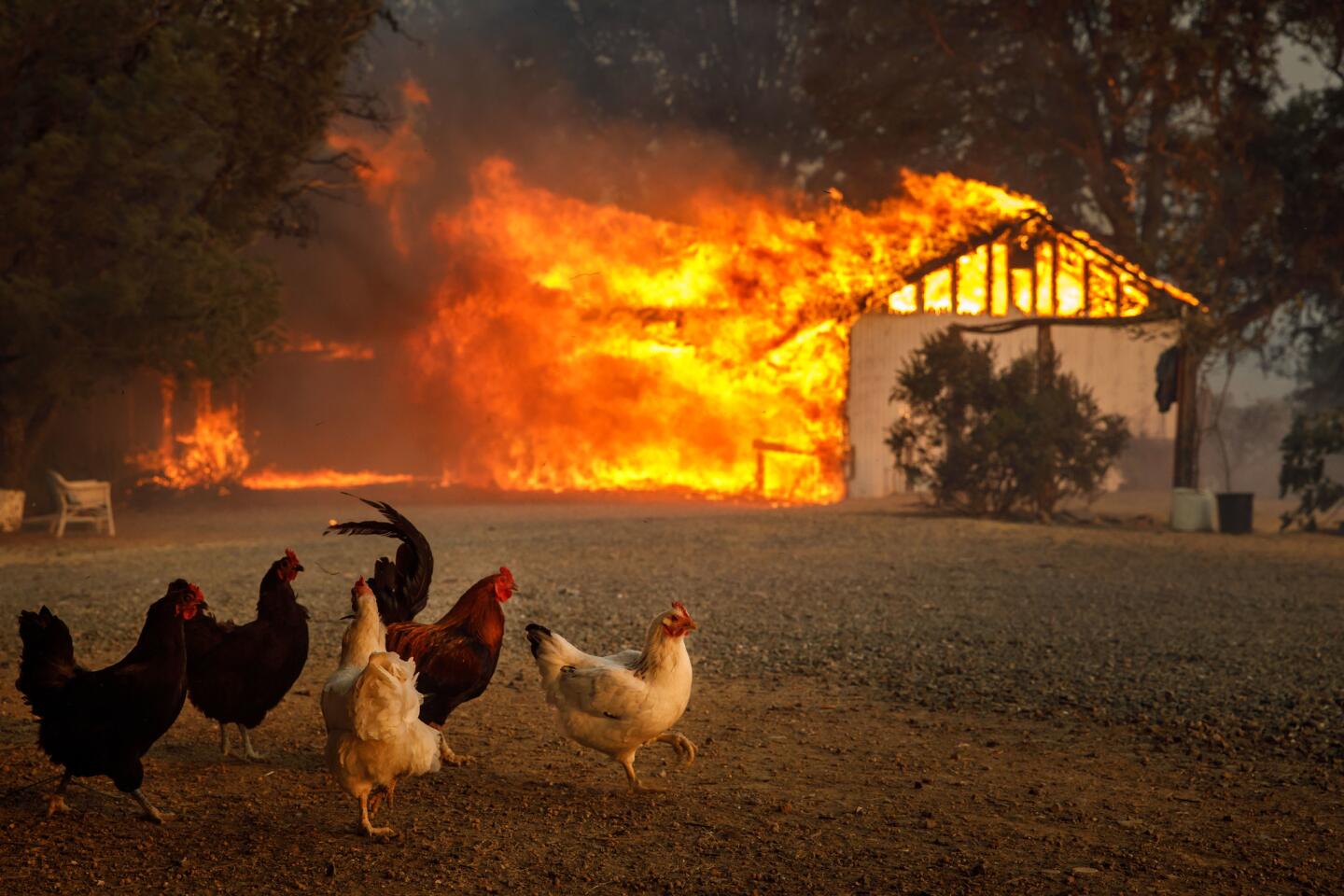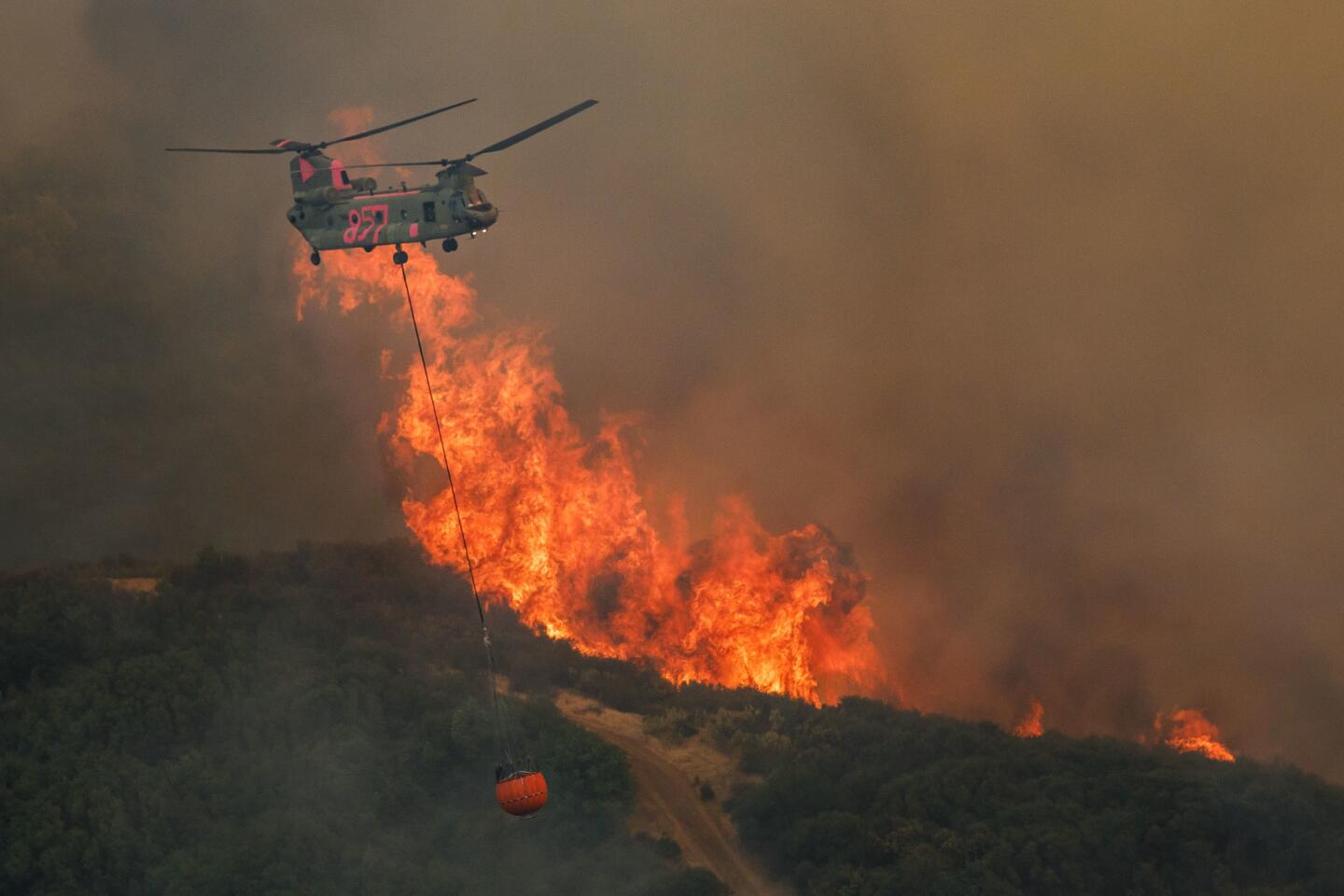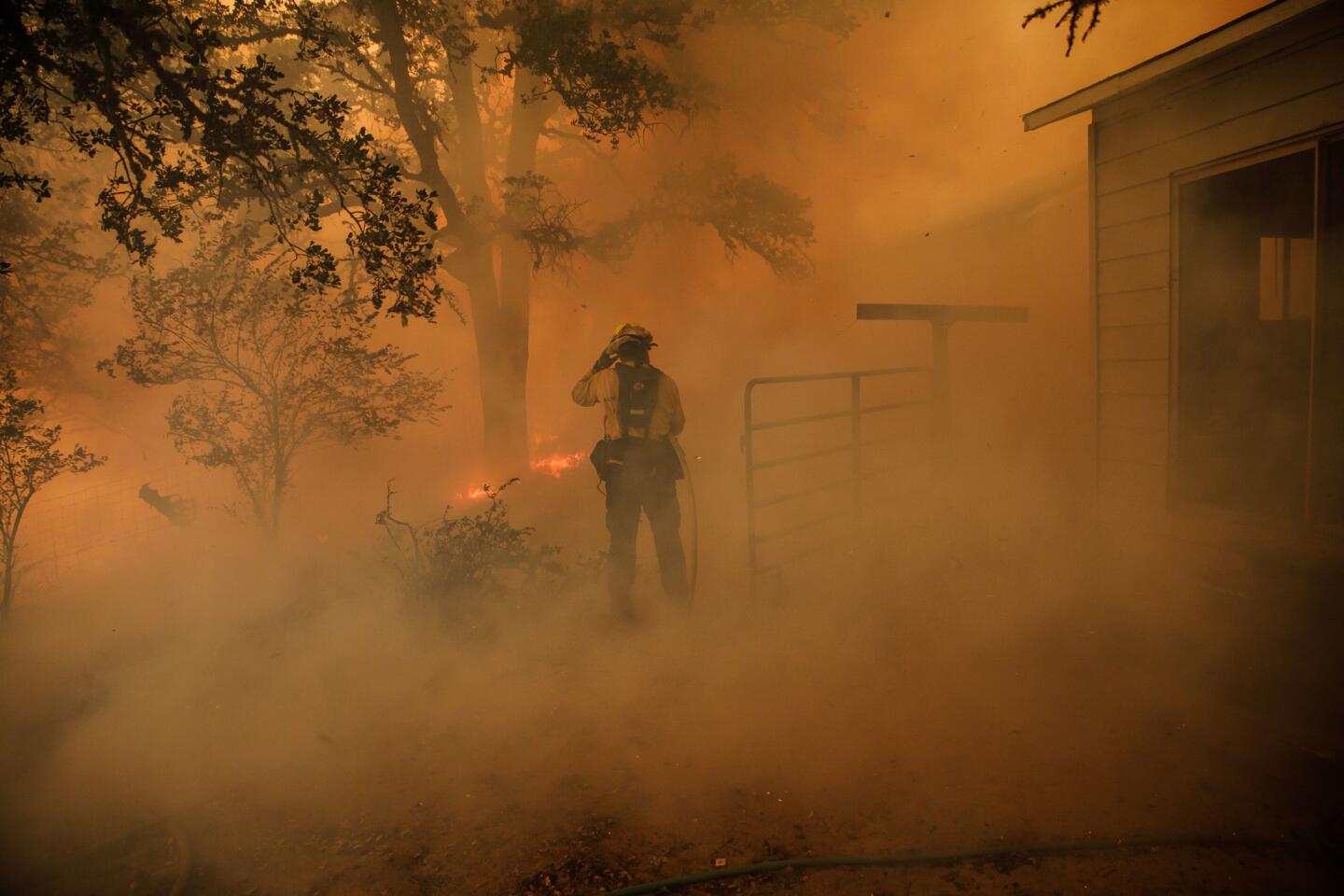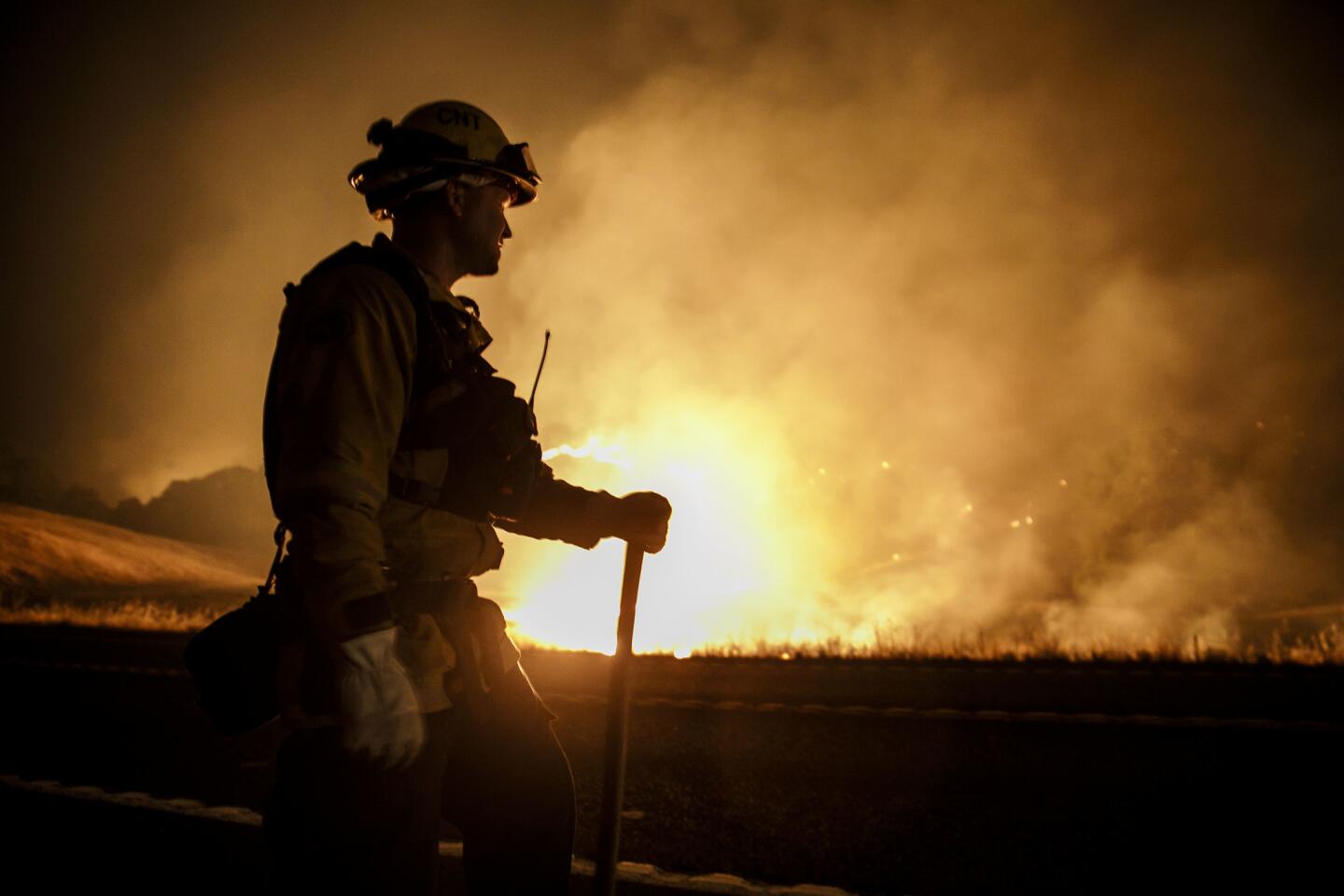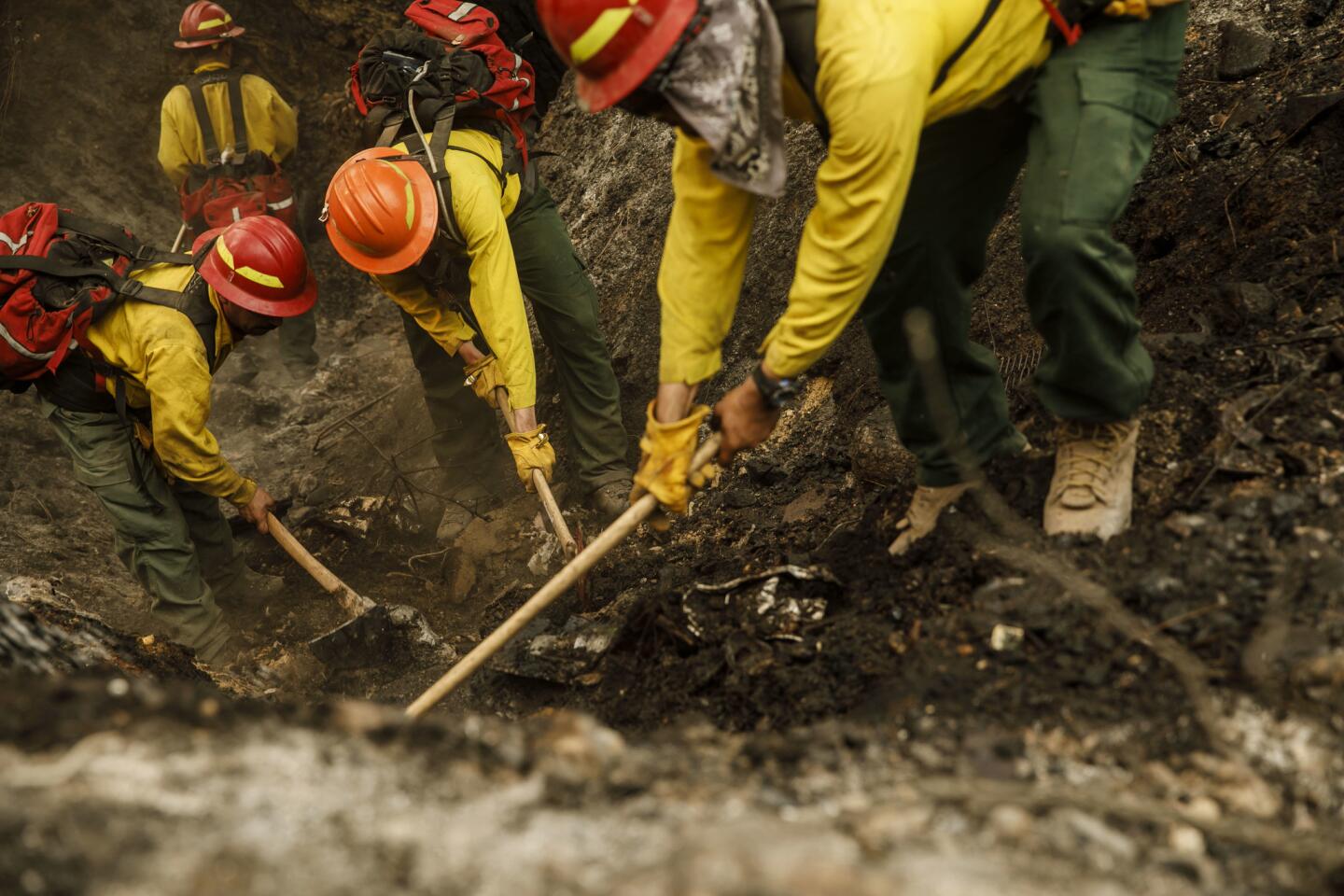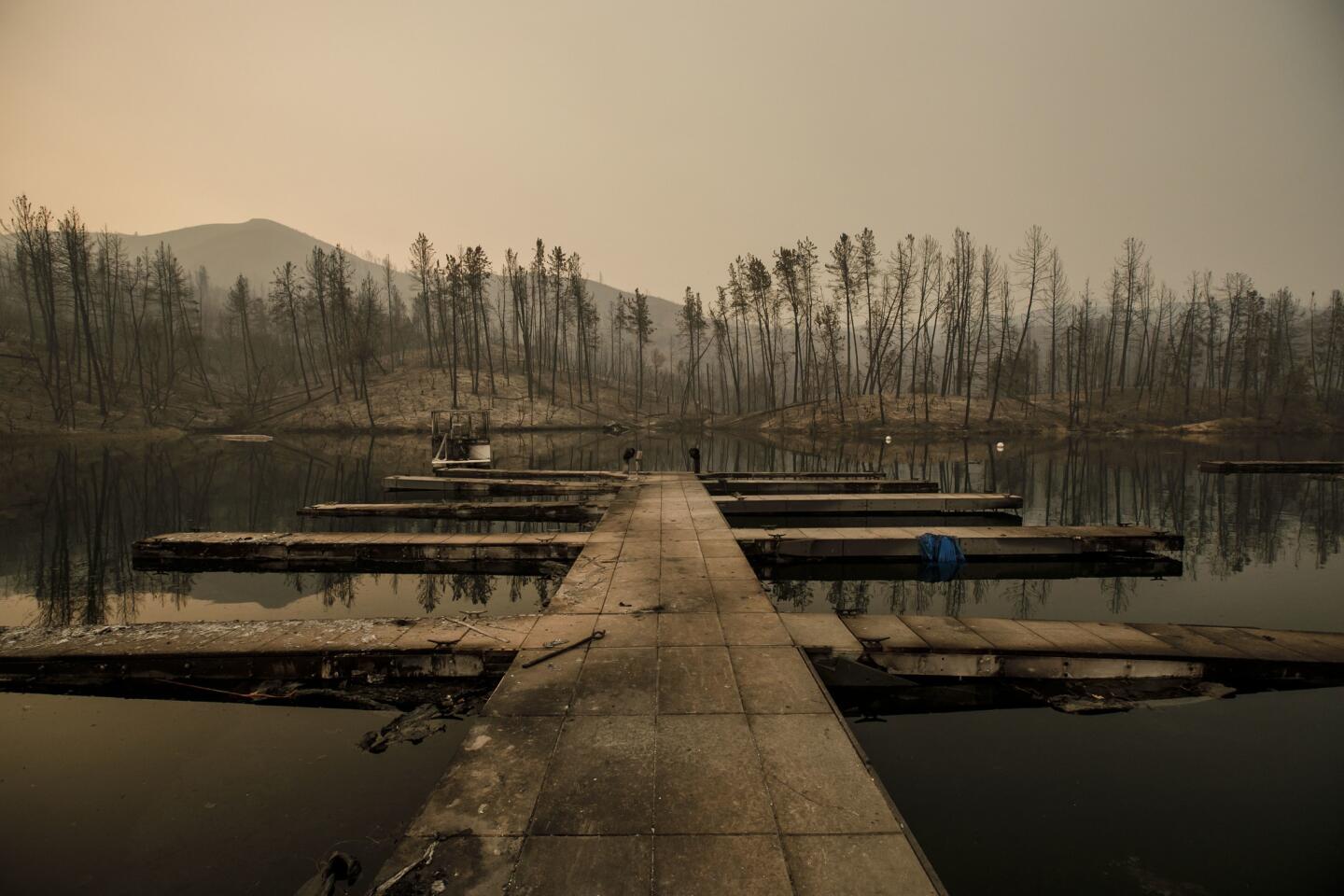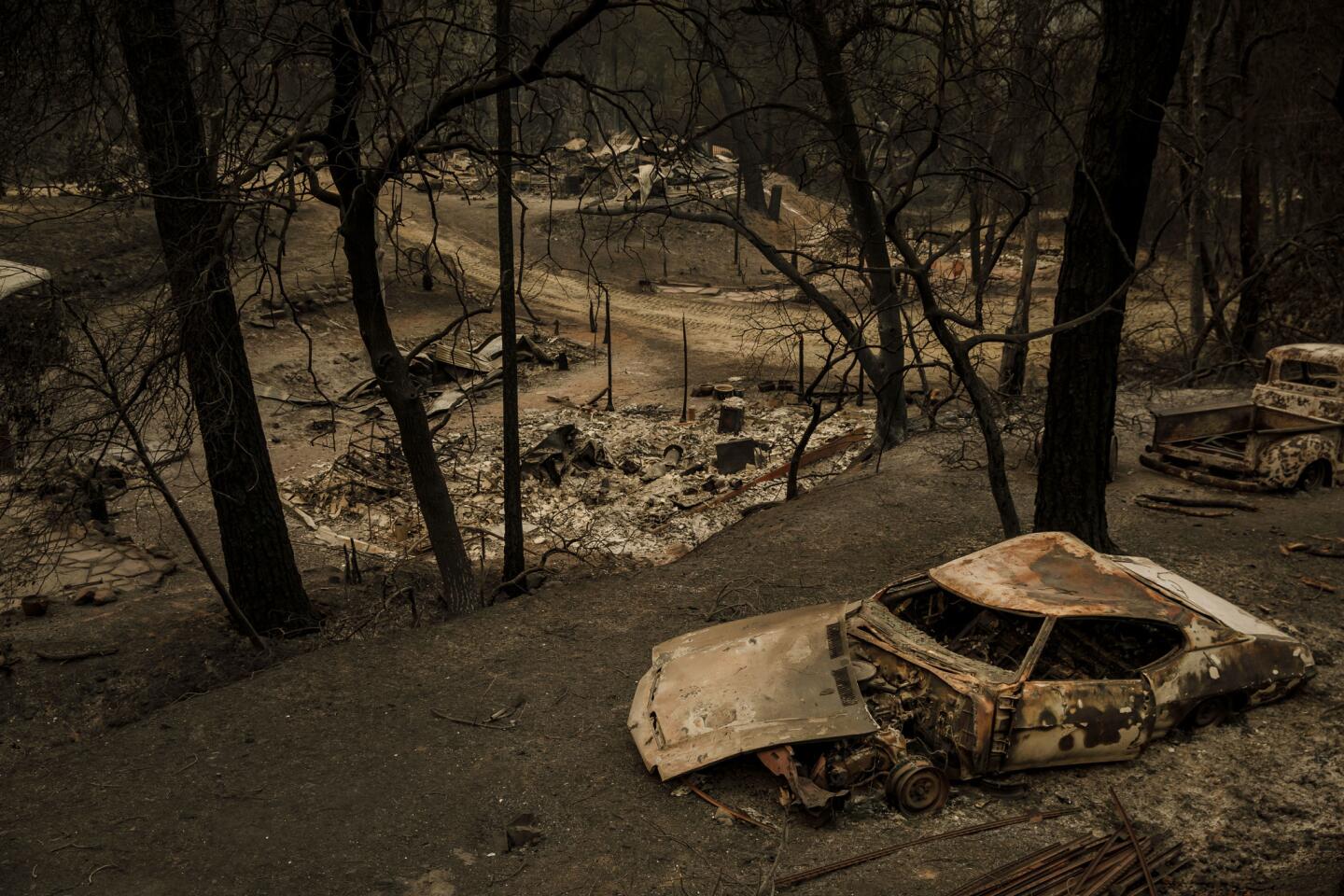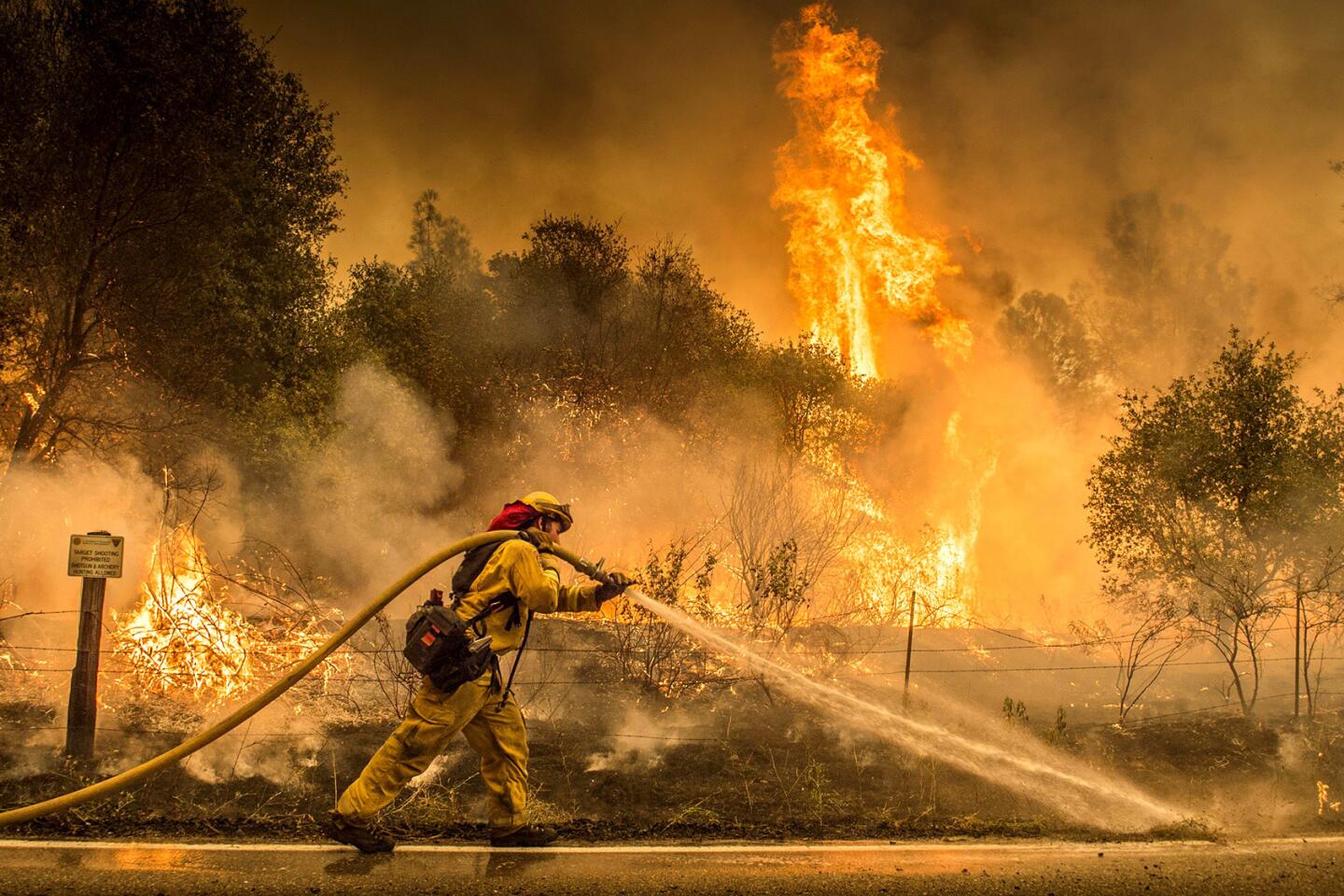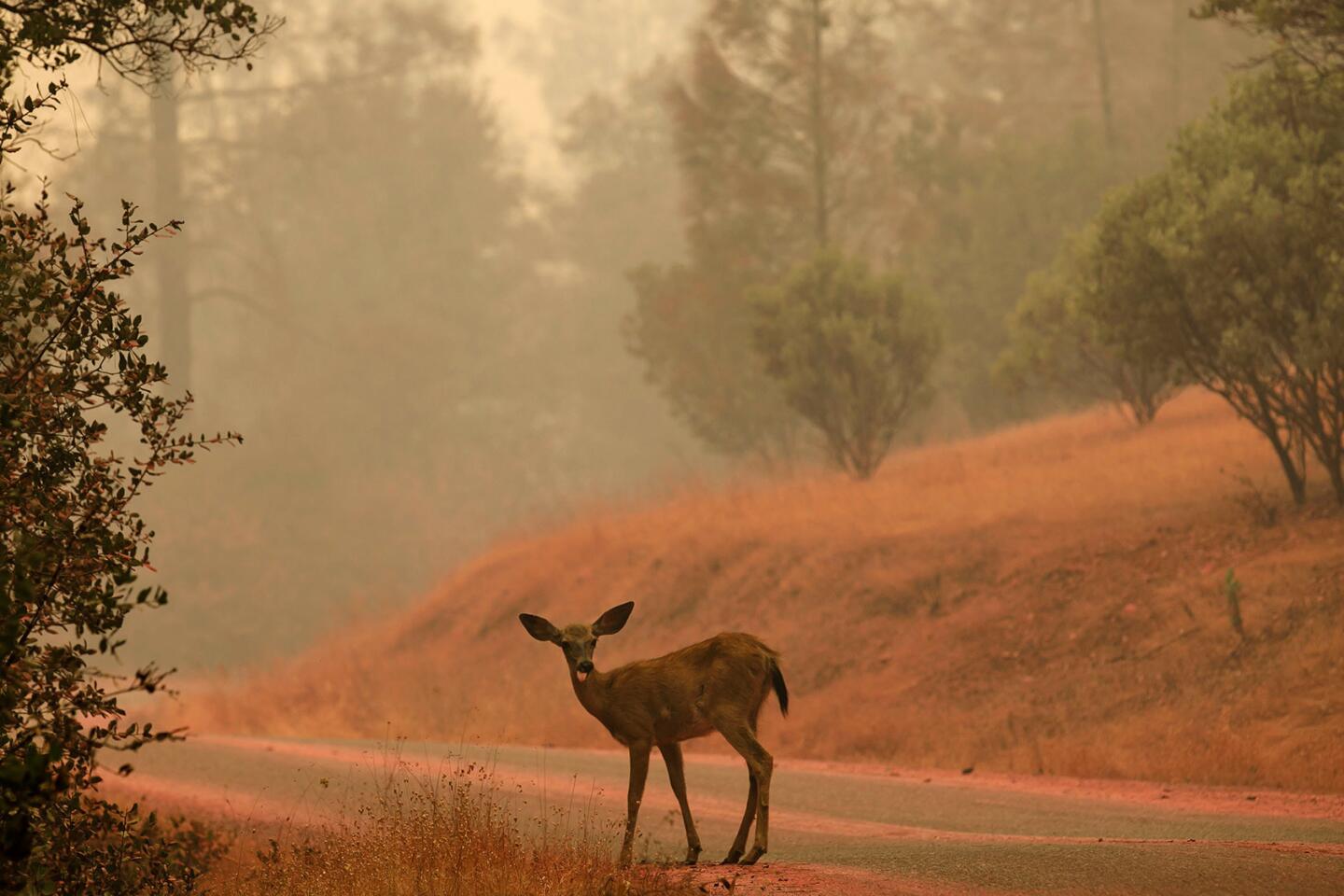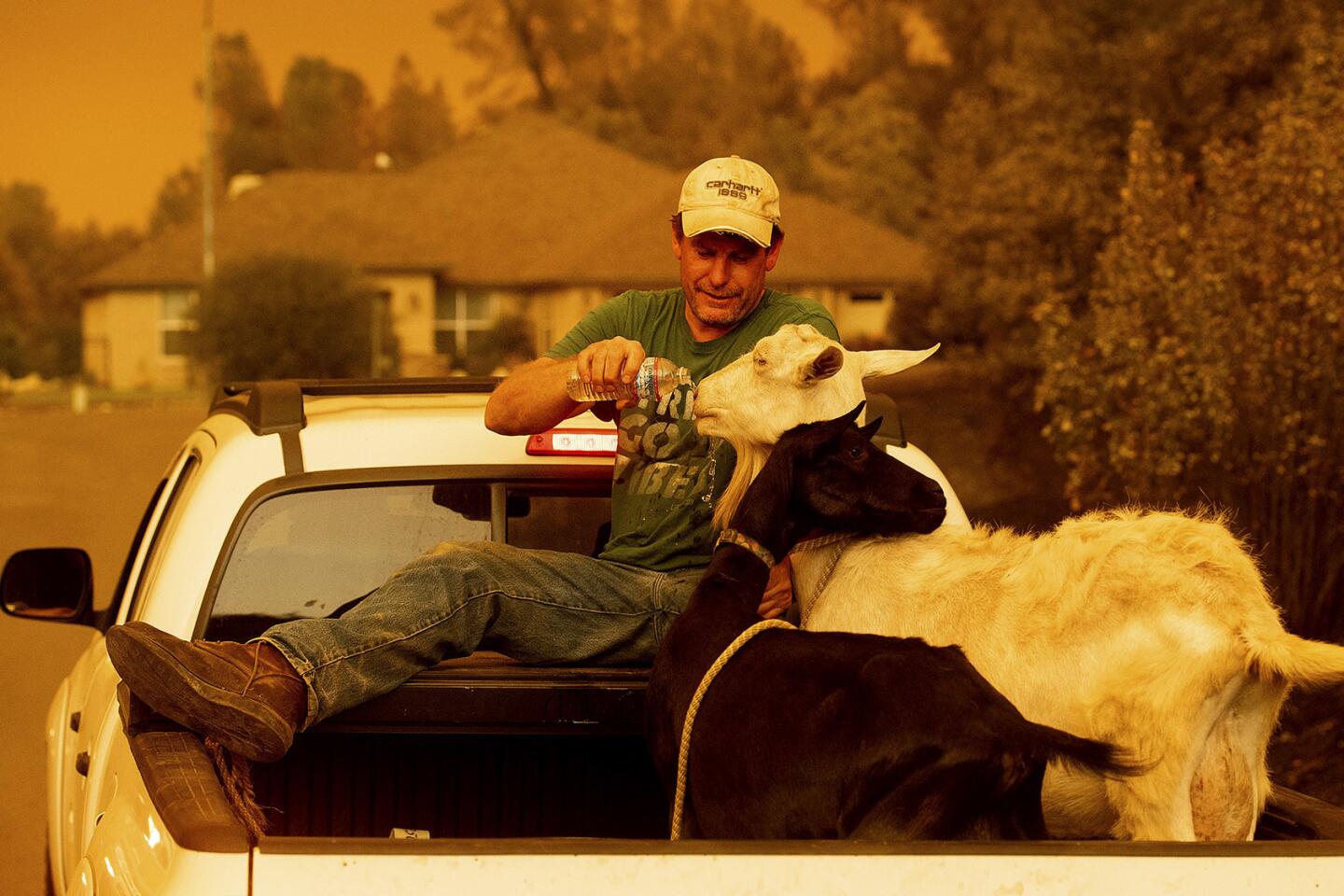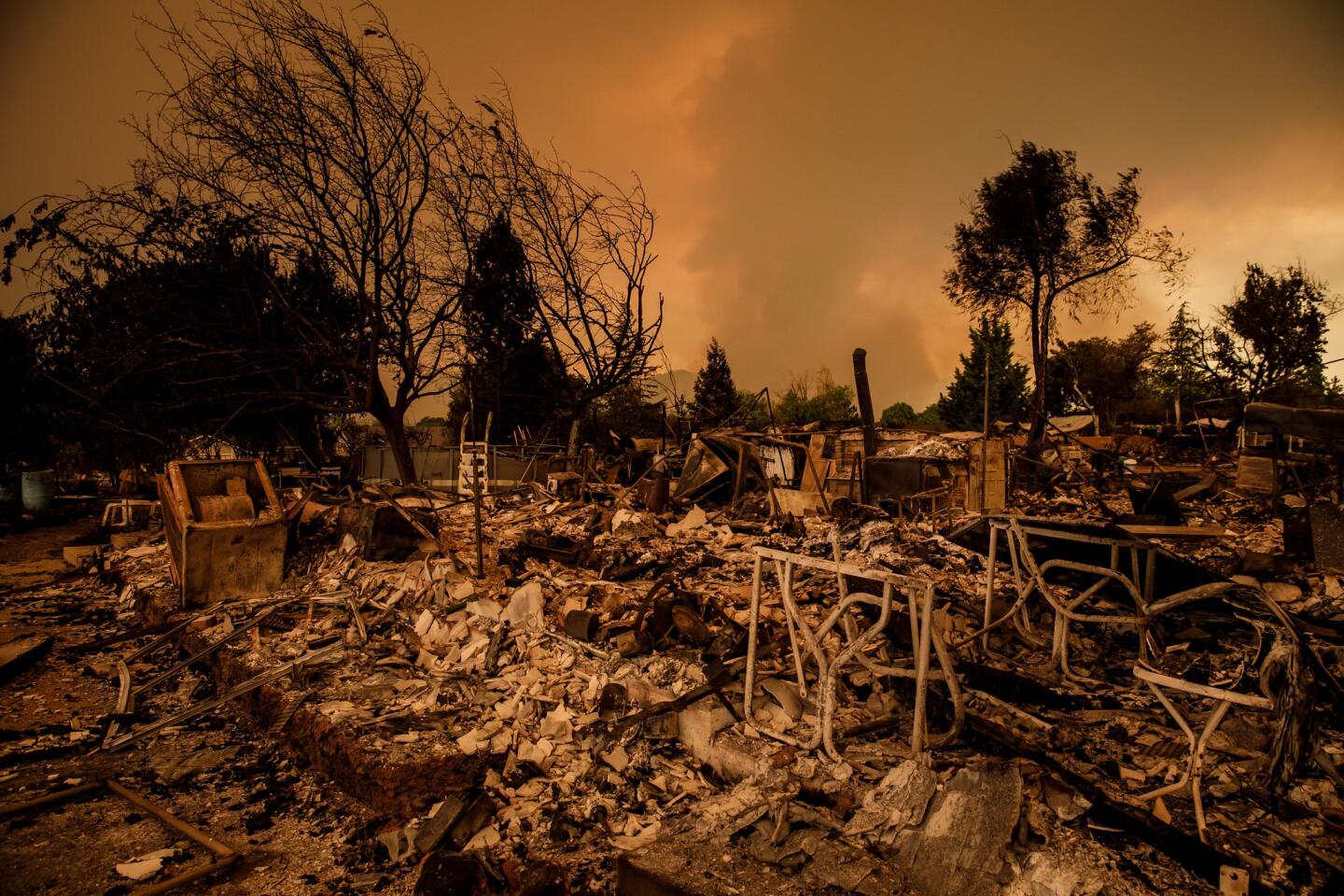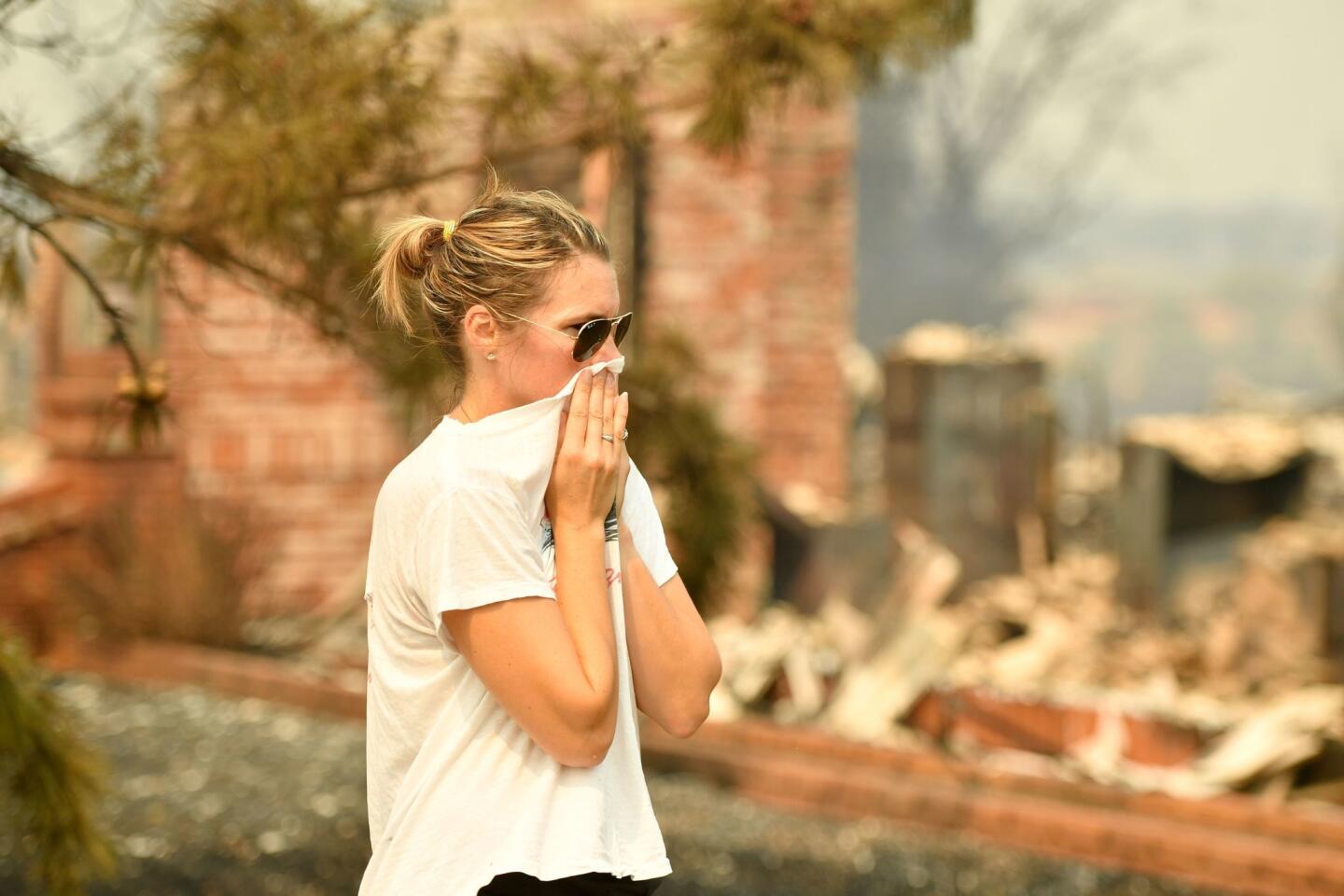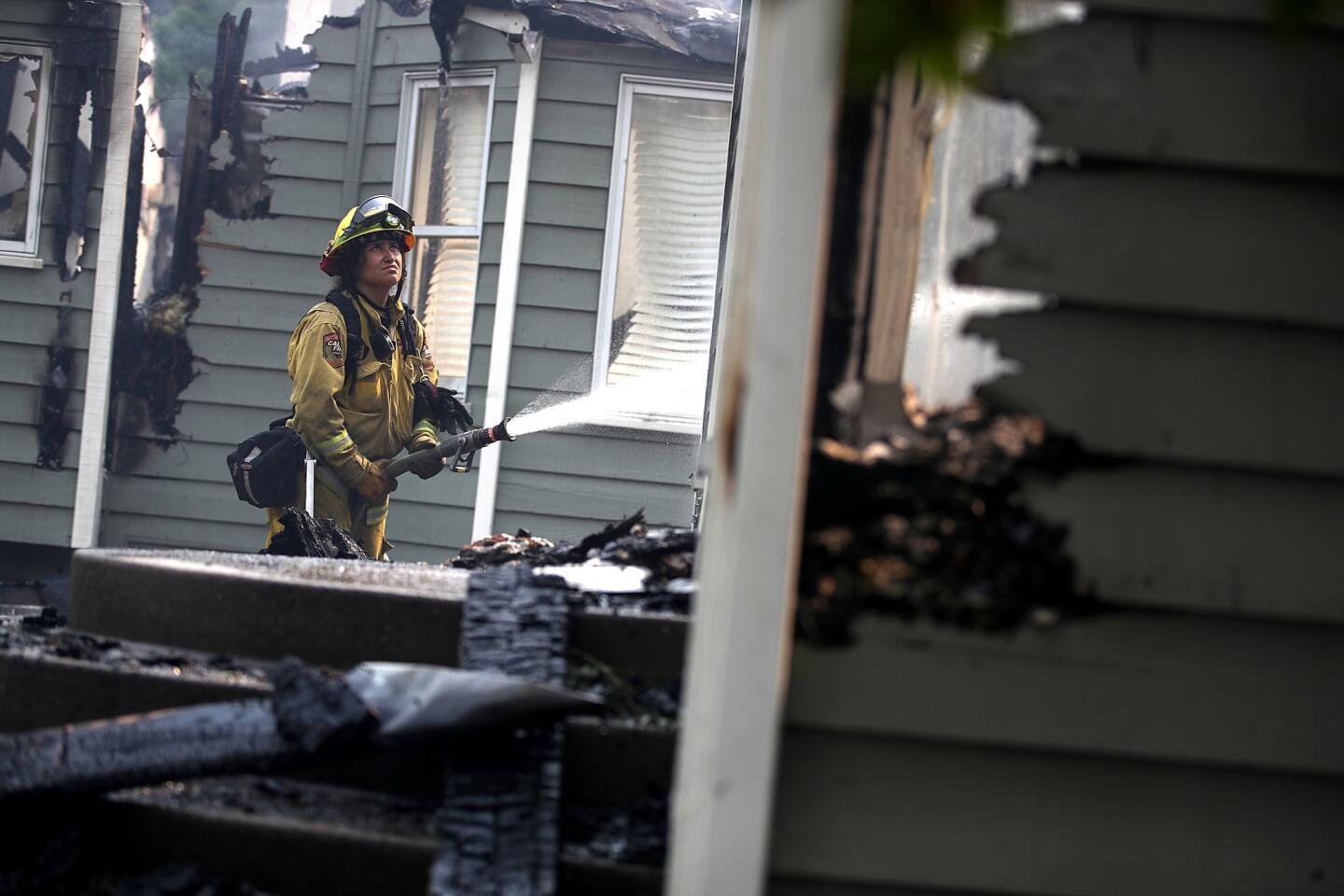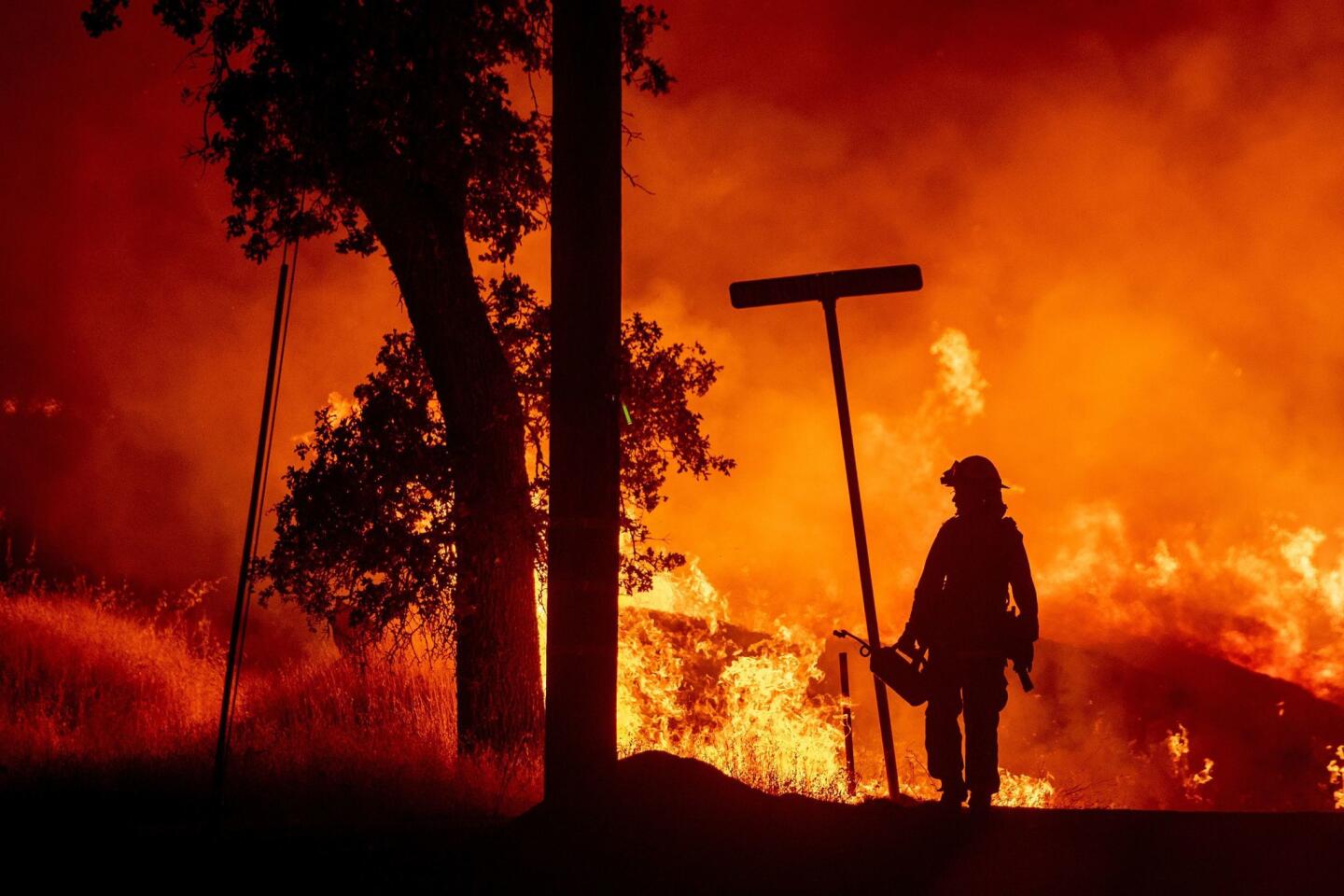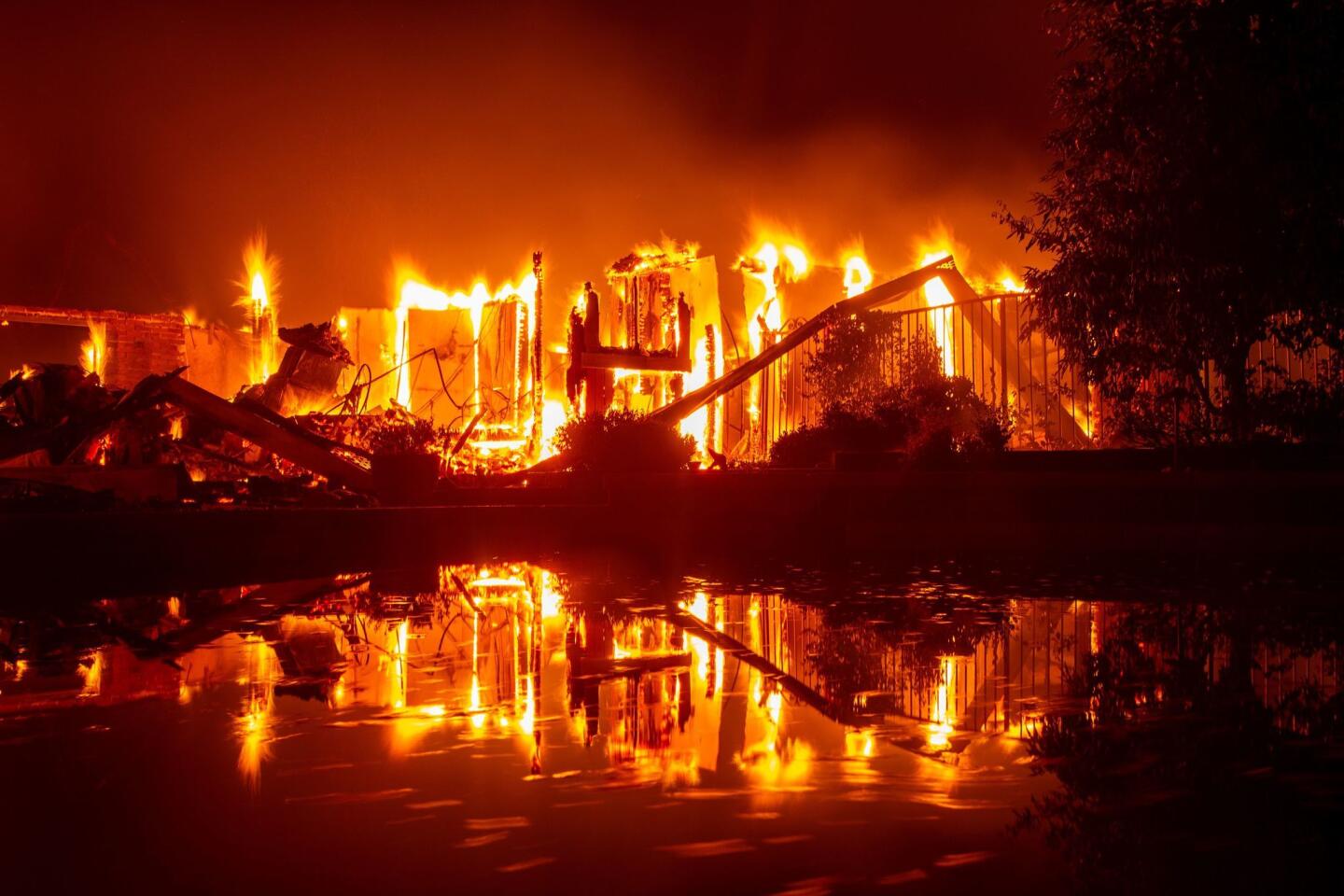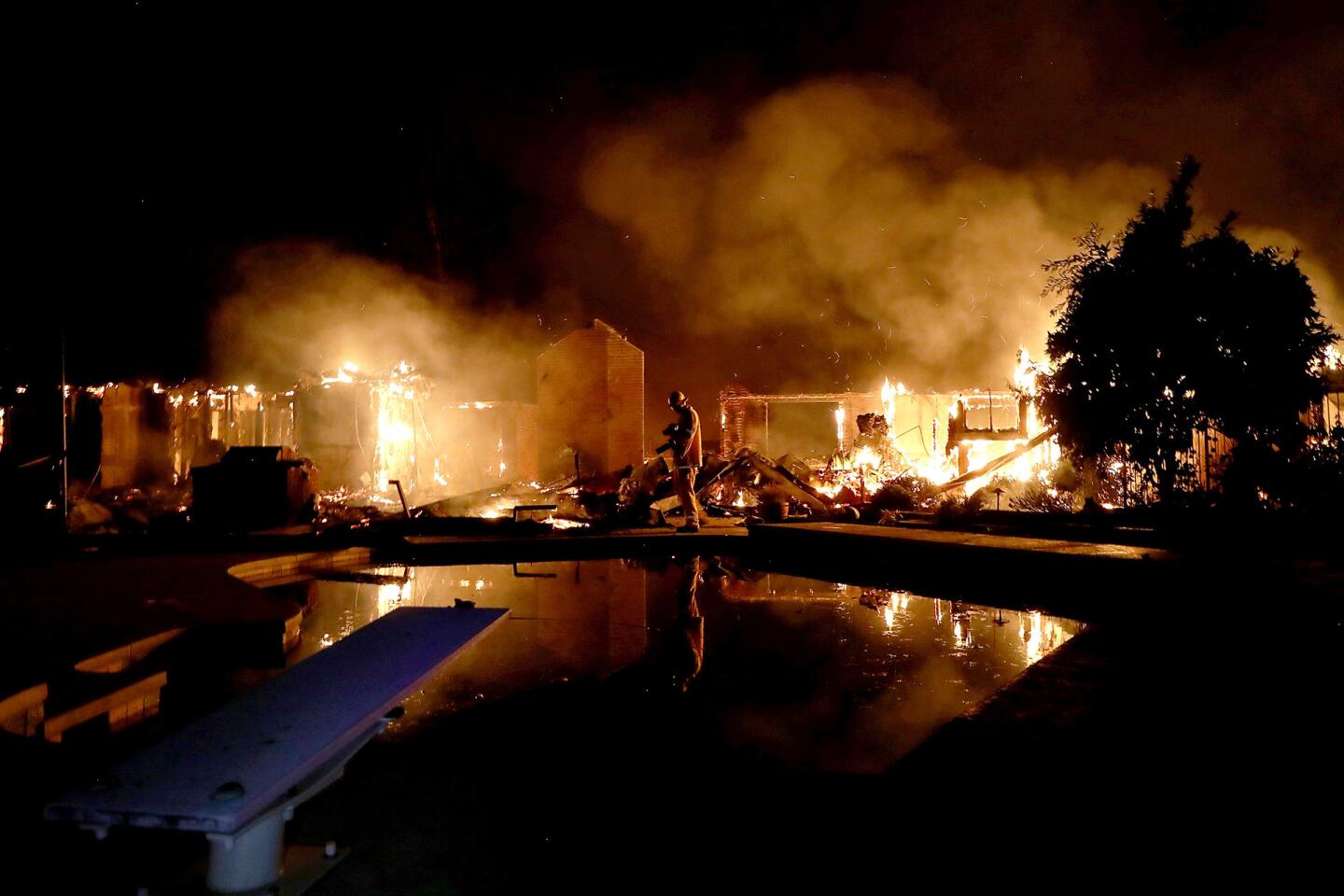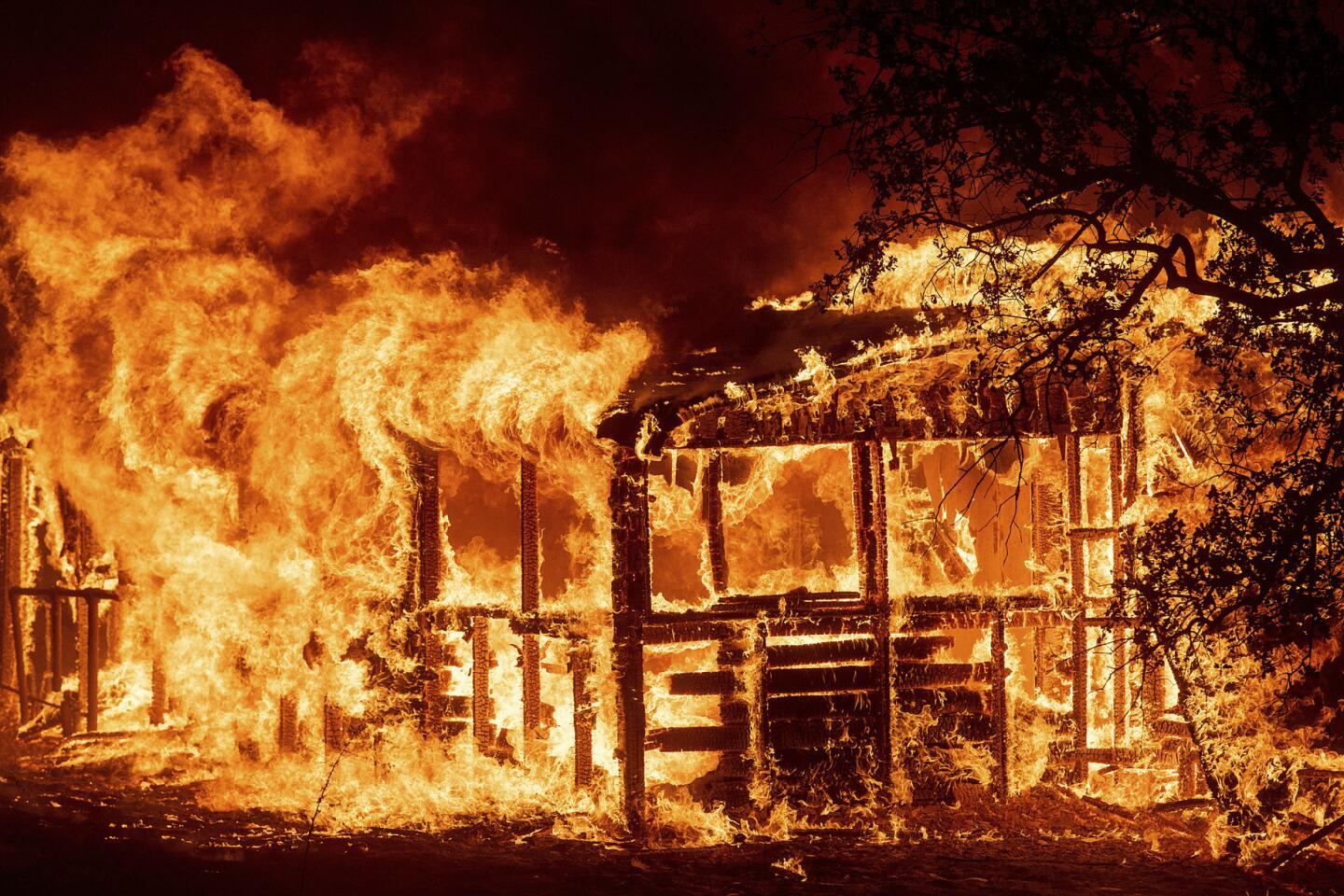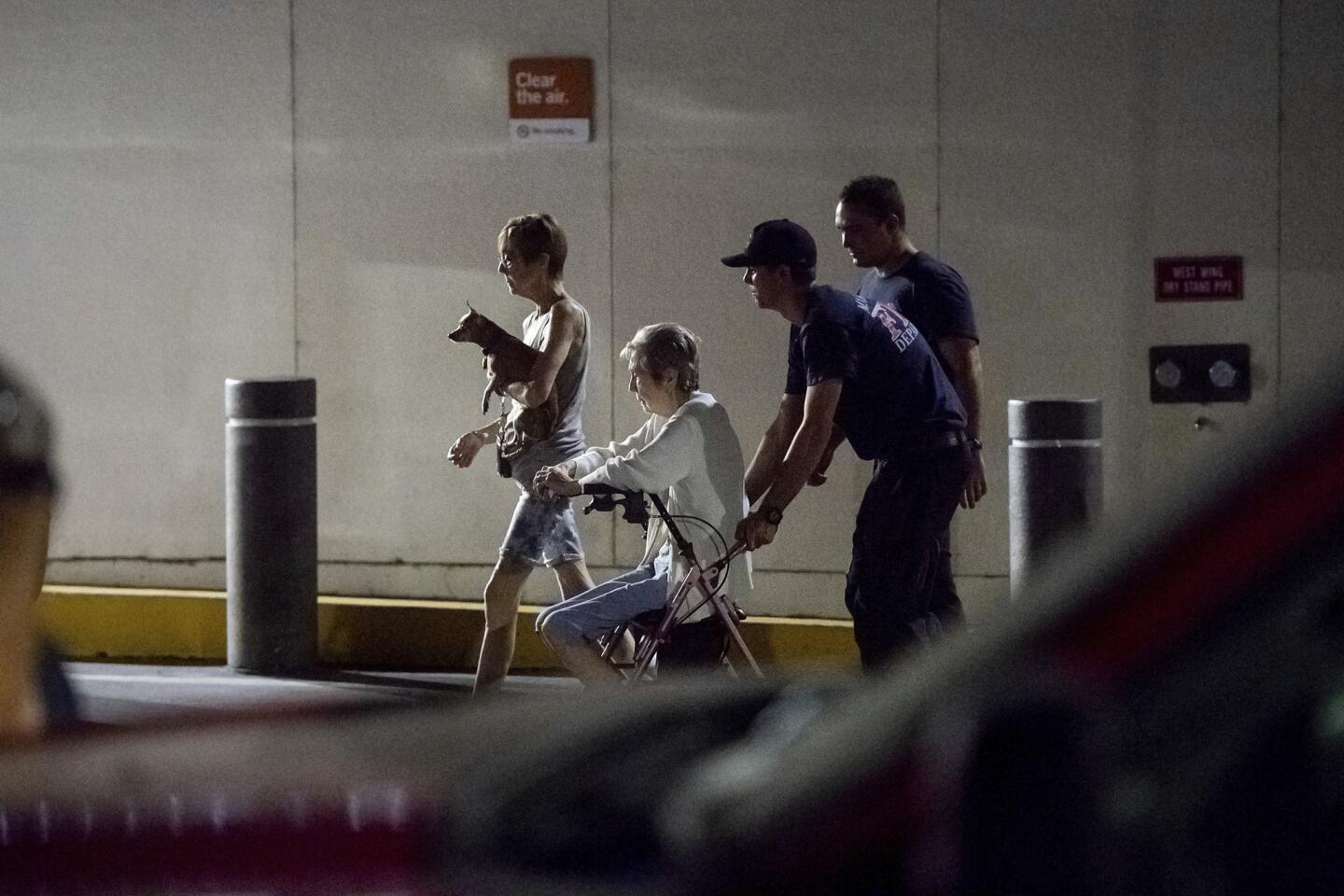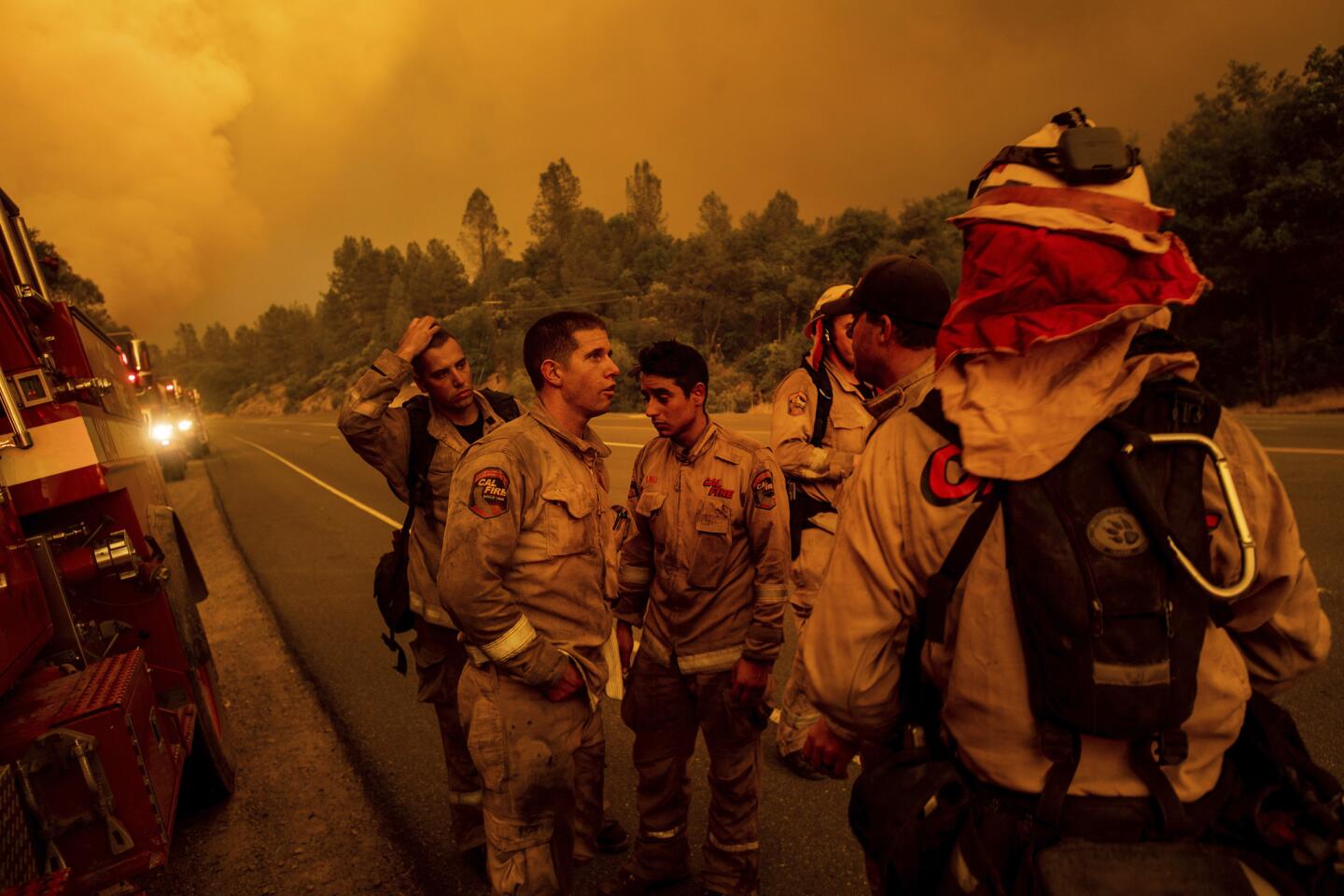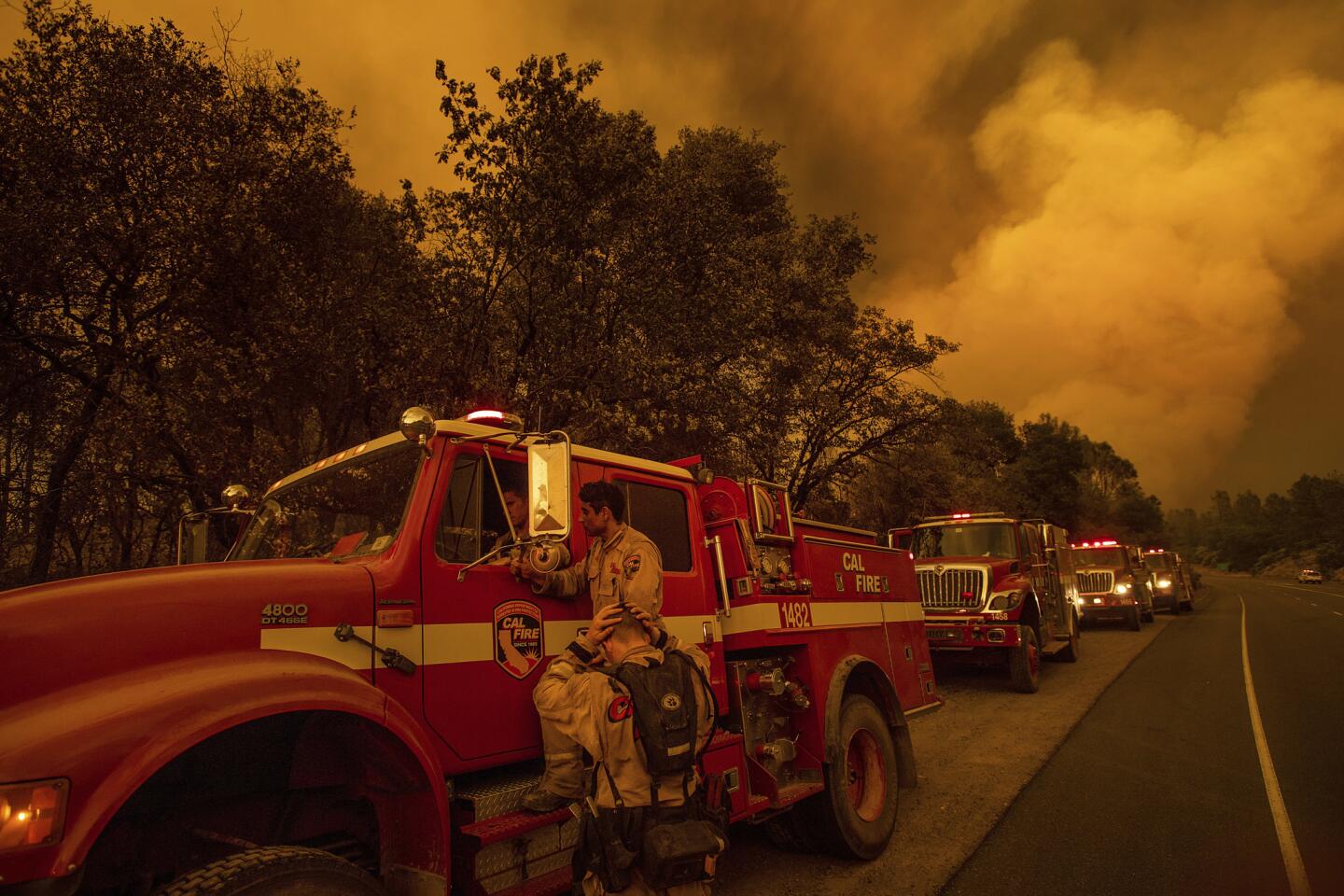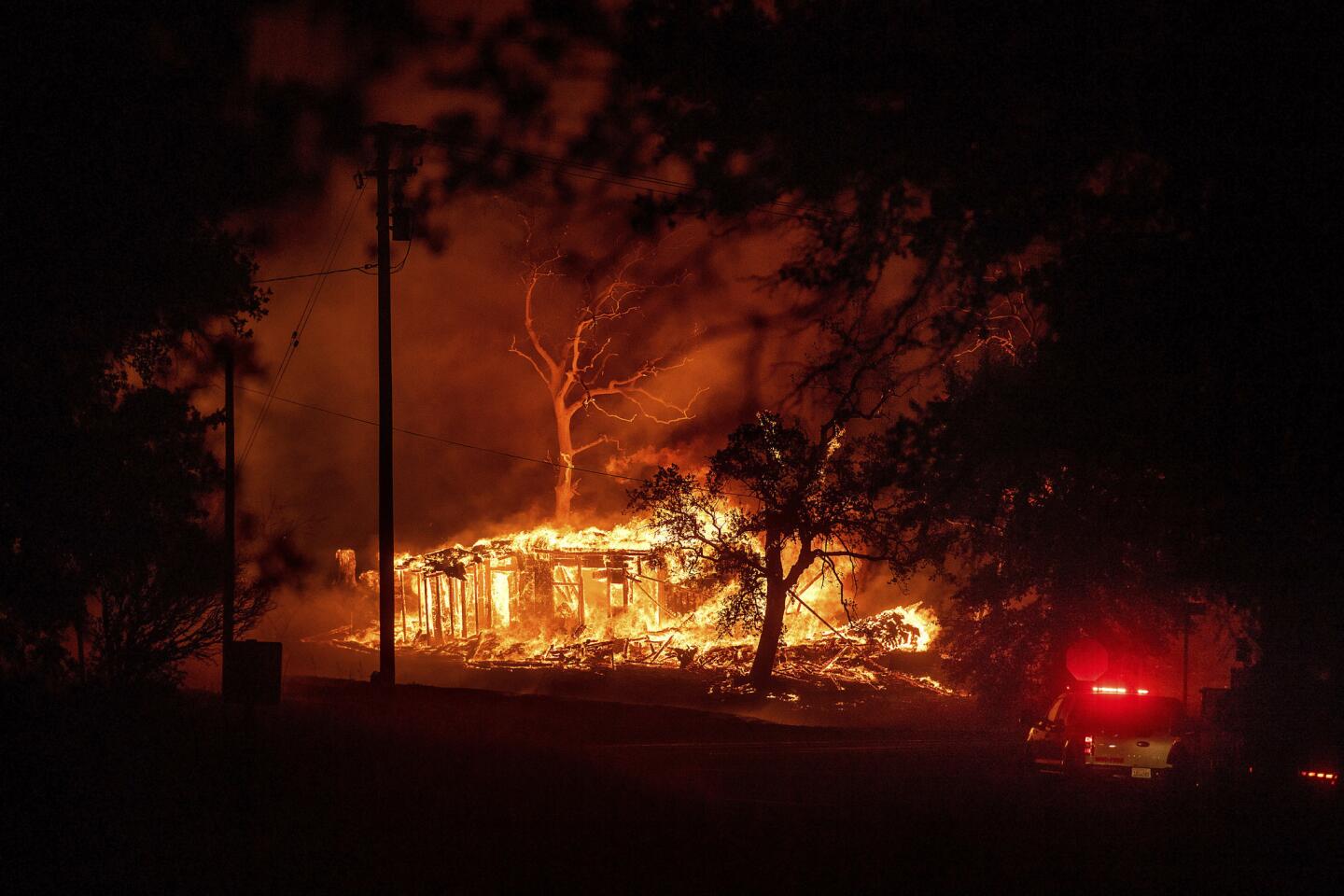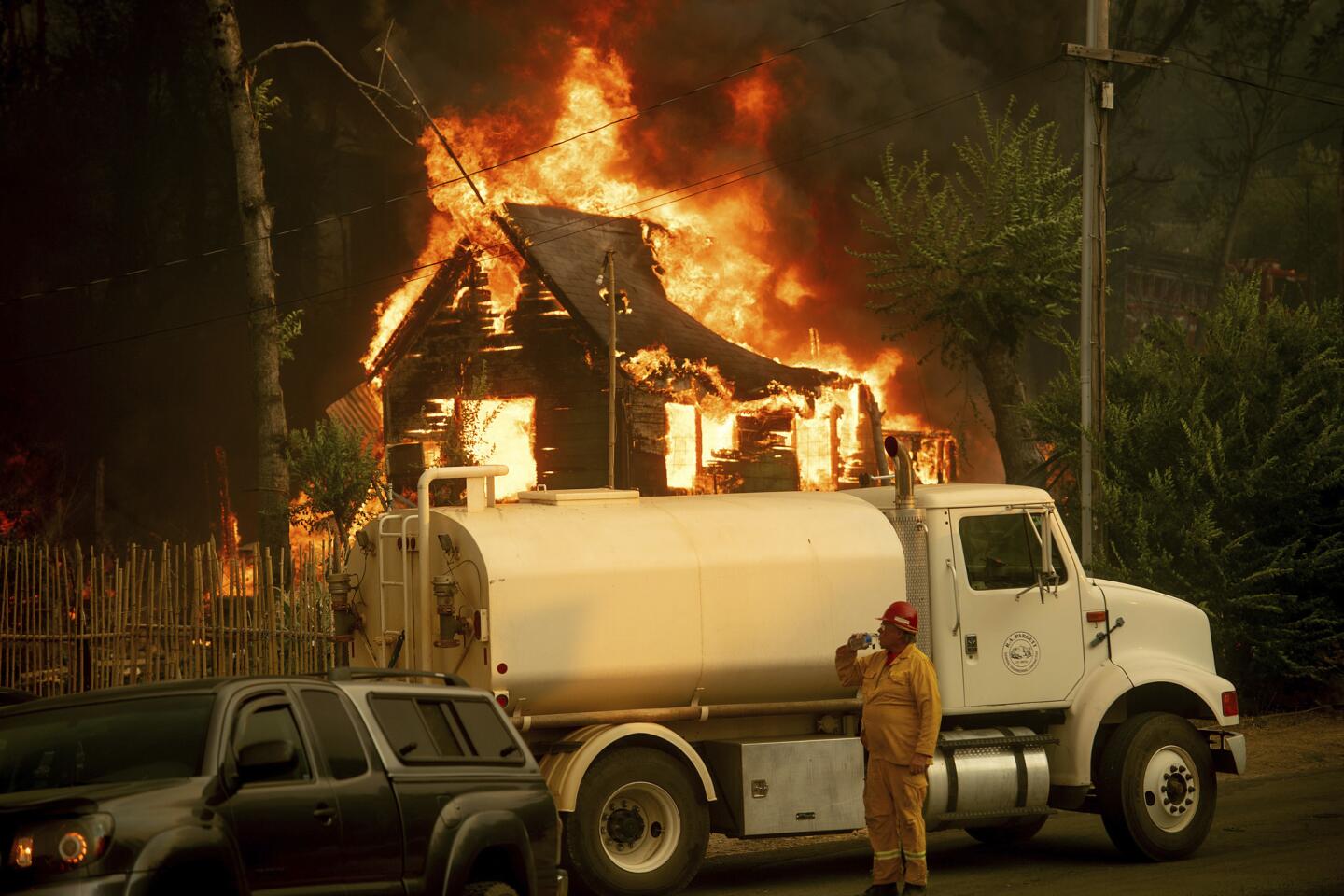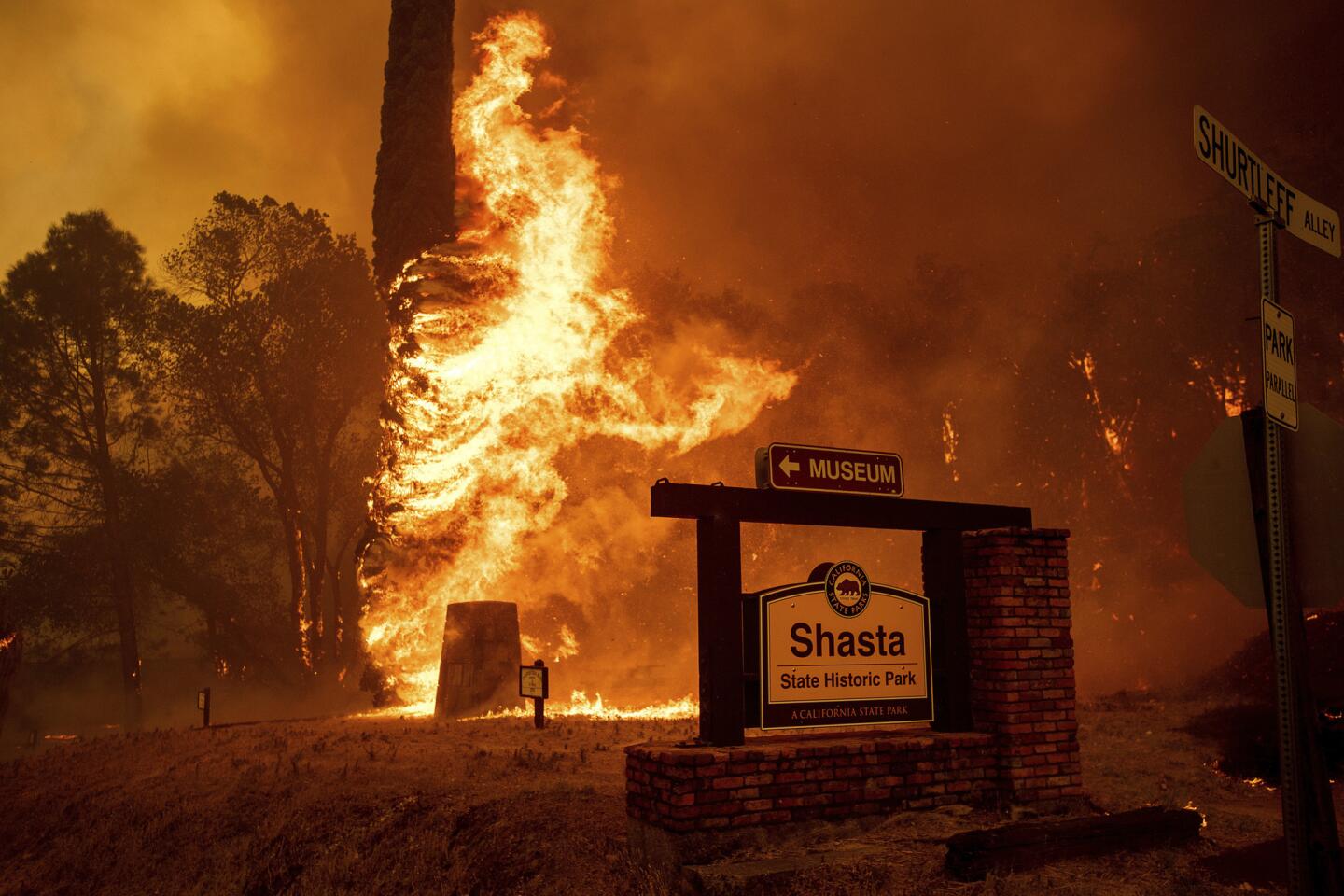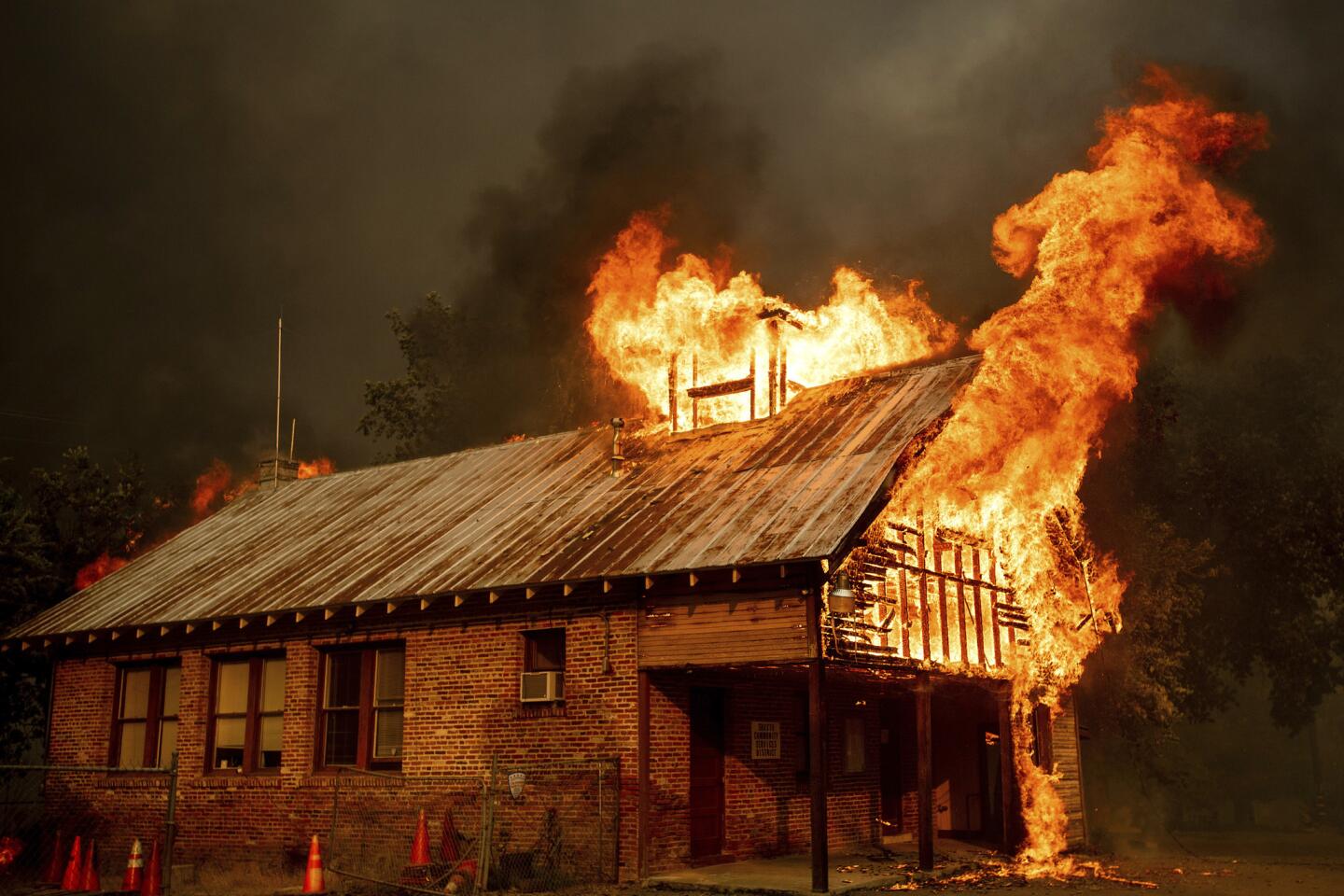A new normal for California: Destructive wildfires throughout the state
- Share via
This is the new normal: There are 17 serious wildfires burning throughout California, including one of the deadliest and most destructive in the state’s history.
Firefighters this month have been laboring under triple-digit temperatures and dry conditions to gain control over fires that have burned indiscriminately through residential neighborhoods, rolling hills and steep, forested terrain. The flames are stoked by dry brush and areas of dead trees, some of which haven’t burned in decades.
As of Tuesday, more than 12,300 firefighters were on the lines battling infernos that have burned more than 280,000 acres across the state.
“It’s a horrendous battle,” said Scott McLean, a deputy chief with the California Department of Forestry and Fire Protection.
Four men have died fighting the wildfires, and each of their deaths has highlighted the difficulties of fire containment.
Two died in the Ferguson fire weeks apart, one when his bulldozer overturned and another when a falling tree struck him. In the Carr fire, an 81-year-old private bulldozer contractor and a fire prevention inspector both died in Redding after flames swept through parts of the city Thursday night. The flames and heat were so intense, they created their own weather system and tornado-like winds. Four civilians died in the same conditions.
The Carr fire in Shasta County had burned 112,888 acres by Tuesday evening and crews increased containment to 30%. It has destroyed at least 1,378 structures — more than last year’s Thomas fire in Southern California — making it the sixth most destructive and the 13th deadliest wildfire in California history, according to state figures. The majority of the damage was in west Redding and some surrounding areas. As damage assessments continue, McLean expects the fire’s ranking to climb even higher.
About 22,000 Carr fire evacuees were allowed back into their homes by Tuesday night, but 15,000 remained displaced, McLean said.
Crews continued to build containment lines Tuesdaynight, hampered somewhat by shifting winds and steep terrain. Most of the fire activity now is on the northwest corner of the fire, McLean said, and the rising containment is a positive sign.
Of the largest fires in the state, firefighters have the least containment over the two blazes in Mendocino County — the Ranch and River fires. Together they have burned more than 80,000 acres and are 10% and 12% contained, respectively. The two fires have destroyed 10 structures so far.
Those fires both ignited Friday and are burning largely in rural areas that include some rolling hills as well as rugged slopes. Firefighters are battling “a little bit of everything,” including dry fuel, weather and terrain, McLean said.
Firefighters faced wind gusts up to 17 mph Monday night and could see westerly gusts of up to 20 mph through Tuesday evening, National Weather Service meteorologist Cory Mueller said. On Monday night, firefighters worked to extinguish spot fires, according to a fire incident report.
Firefighters were also contending with two new wildfires that ignited Tuesday afternoon. The Eel fire charred 865acres in a sparsely populated area east of Covelo in Mendocino County, while the Butte fire scorched 800acres northwest of Yuba City in Sutter County. The Butte fire was 40% contained late Tuesday.
The Ferguson fire, near Yosemite National Park, has burned through 58,074 acres. The fire has raged in rugged forest terrain, with pockets of dangerous dead brush, grass and trees that have not seen flames for close to a century. As of Tuesday, the fire was 33% contained. Although only one structure has been lost in the fire, two firefighters were killed and nineothers injured, according to authorities.
There will be a slight cooling of temperatures over the Carr and Mendocino fires on Wednesday and Thursday that will be barely noticeable to firefighters, but it could help them continue to gain control of the wildfires, authorities said.
The rapid spread and high level of destruction of these recent fires is “a new normal,” McLean said. Of the state’s 20 most destructive wildfires, a quarter of them ignited in either October or December of last year. Topping the list is last year’s Tubbs fire, which killed 22 people and destroyed 5,636 structures when it sped through the city of Santa Rosa.
Nationally, there are more than 60 uncontained large fires burning in the Western United States, according to federal authorities.
In Southern California, the Cranston fire near Hemet was 89% contained Tuesday evening after burning 13,139 acres and destroying five homes.
A common thread in the California fires this year is extreme heat, the likes of which the state has never seen in the modern historical record.
In the past, there has been some reluctance among scientists to cite climate change as a major factor in California’s worsening wildfires. Human-caused ignitions and homes being built ever closer to forests have played a large role. But the connection between rising temperatures in California and tinder-dry vegetation is becoming impossible to ignore, according to experts who study climate and wildfires.
And it’s not just the biggest wildfires statewide that are taking a toll on firefighters — they’re also dispatched to quickly extinguish smaller brush fires and prevent them from spreading, McLean said.
“Last week alone, during the week, you had over 1,000 wildfire responses,” he said. “Commonly this time of year it’s maybe 250 to 300.”
In the Railroad fire, a 10-acre brush fire in Santa Clarita that ignited Monday afternoon, three firefighters suffered minor burns and smoke inhalation. It was 95% contained by Tuesday evening, according to the Los Angeles County Fire Department. At least 13 units in two residential structures were damaged.
Concerned citizens across the state have asked how they can help, offering to bring water and food to base camps. But that’s not what firefighters need from the public, McLean said.
“The best thing you can do for the firefighters is to be prepared — be prepared to leave, make sure your family’s educated on what to do,” he said. “And when it’s time, leave. Do not stay.”
Los Angeles Times staff writers Alene Tchekmedyian, Ron Lin and Ruben Vives contributed to this report.
Twitter: @Sonali_Kohli
UPDATES:
10:20 p.m.: This story was updated with new fire figures.
8:45 p.m.: This story was updated throughout with new fire figures.
11:40 a.m.: This story was updated with information about fires nationwide.
The story was originally published at 10:25 a.m.
More to Read
Sign up for Essential California
The most important California stories and recommendations in your inbox every morning.
You may occasionally receive promotional content from the Los Angeles Times.

